
“A generational connection to this place we call home.” Indigenous Chicago


“A generational connection to this place we call home.” Indigenous Chicago
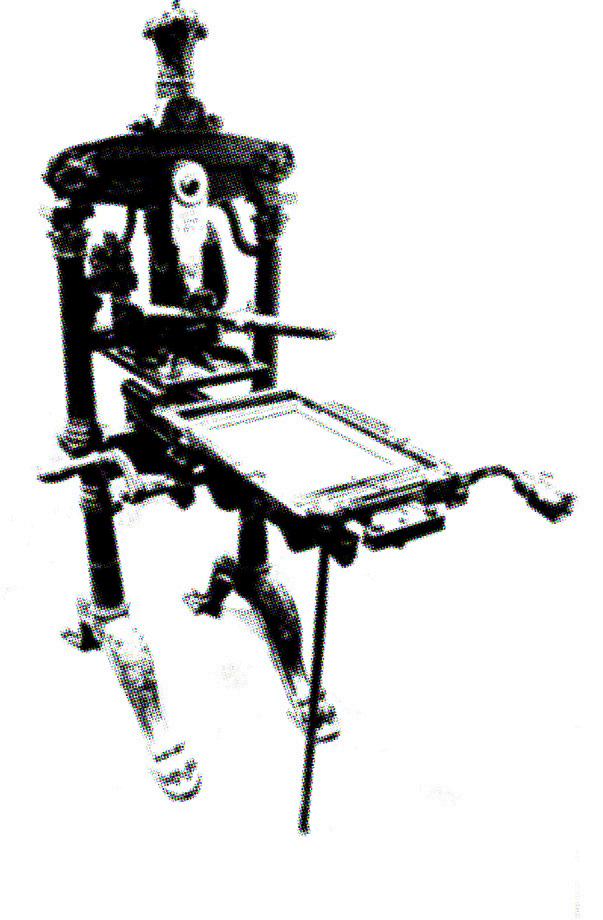
Exhibition on view December 12, 2024 through March 29, 2025
Free and open to all
by
Nico Marabella
Indigenous Chicago is the culmination of a four-year, community-based process and includes components such as oral histories, an exhibition, digital maps, and a new curriculum for high school students.
by
Suzanne Karr Schmidt
A quiet evening stroll last March took a surprising turn when centuries-old European books were discovered on a Chicago sidewalk.
by
Lili Pangborn
A scholar-in-residence taps into the Newberry’s resources and authors a landmark report on teaching U.S. history in secondary schools.
by Peter Regas
A longtime reader discovers what might be the first pizzeria in the United States. His research journey started at the Newberry.

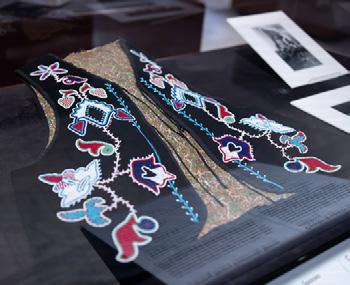
Our cover features Kenomagé Waboyanen, or teaching blankets, by Jason Wesaw (Pokagon Band of Potawatomi) that are displayed in the Indigenous Chicago exhibition that launched in September 2024. Jason is a former artist-in-residence at the Newberry and says the blankets “are about that beautiful water that flows out there in Lake Michigan, the Chicago River, the Little Calumet, and the Grand Calumet.” By incorporating archival materials, along with wood, glass, clay, and other found objects, the textiles are meant to encapsulate the viewer in a “blanket” of knowledge and understanding about our dependence upon and relationship to the water from a uniquely Potawatomi perspective.
When visiting the Newberry, Jason spent mornings at Oak Street Beach to reconnect with the waters of Lake Michigan. “It’s crazy to go and sit by the water first thing in the morning at the center of a metropolis like this,” he says. “But it always helped to ground me, too, because I understood that my ancestors would do this very same thing before the huge skyscrapers and everything was paved over.”
Jason has another connection to an exhibition item, a beaded vest owned and worn by his late uncle, Leroy Wesaw. “When my dad came home [from my uncle’s funeral], he gave me a cassette tape and it said ‘Potawatomi legends’ on it, and I was probably thirteen years old at the time. I stuck that tape in the tape recorder and it was my Uncle Leroy’s stories. That tape in many ways changed my life because it really got me interested in traditional stories and set me on this path in eventually becoming an artist.
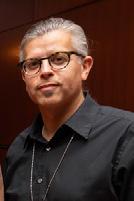
“I think it’s really important when we get these [artistic] opportunities. Part of it is about us. But it never really is about us because of those deep, deep roots and that generational connection to this place we call home.”
MAGAZINE STAFF
Editors Bob Dolgan and Vince Firpo
Designer Andrea Villasenor
Photographer Catherine Gass
To make a gift and become a member, visit newberry.org/support or call (312) 255-3581.
The Newberry Magazine is published semiannually. Every other issue includes the annual report for the most recently concluded fiscal year. A subscription to The Newberry Magazine is a benefit of membership in the Newberry Associates, President’s Fellows, or Next Chapter.
Unless otherwise credited, all images are from the Newberry collection or from events held at the Newberry.
For its entire 137-year history, the Newberry has been an institution with a clear public focus and mission.
As I near the one-year mark of my presidency, it is gratifying to present to you the annual report found at the end of this issue. It conveys the wonderful breadth and depth of the activities of the Newberry, and I am glad for the opportunity to thank our many supporters for enabling our work over the past year.
For its entire 137-year history, the Newberry has been an institution with a clear public focus and mission. If you have spent some time on our first floor, you may have noticed a beautiful, glass directory on display from the early days of the Newberry. Since opening our building doors in 1893, we have moved away from the natural sciences, medicine, and the “useful arts” listed on that directory to focus more exclusively on the humanities, but the centrality of the Newberry’s openness and public access have been with us from the very beginning.
Then, as now, we are “Free to the Public,” and then, as now, our collections and research mission have co-existed with public programming and exhibitions to enrich the intellectual lives of our patrons. In addition to directing visitors to various reading rooms, this early wayfinder also refers to a ground floor museum. Indeed, our current exhibit spaces seem to be where the original museum was when the library opened. On November 12, 1893, the Chicago Sunday Tribune’s review of our (then) brand-new
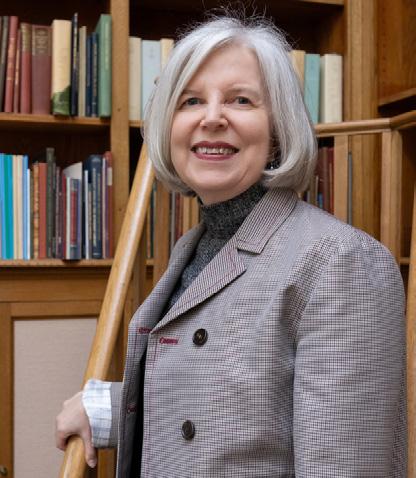
materials, but it also emphasized that “the library aims to be a live educational center.” (The seriousness of this purpose, the Tribune intimates, can be found in the size of the ground floor auditorium, which at the time could seat 475 persons.)

We are indeed a thriving educational center. Last year, we had significant increases in our reading room registrations (the highest number in fifteen years!) as well as in our public program attendance—and nearly half of our audience members were first-time visitors. Because we are steadily growing our digital collections and online resources, collections and programmatic offerings are globally accessible: virtual visitors from all fifty states and 156 countries accessed our digital materials last year, resulting in nearly 1.5 million views. Our fellowship program and academic centers are flourishing. We are a growing resource for teachers, whether through our digital resources for the classroom or the increasing numbers of educators who benefit from our professional development seminars.
However impressive and encouraging such statistics are, they do not capture the wonder and magic that many individuals experience every day at the Newberry as they uncover long-lost family histories, access a beautiful artefact that once belonged to royalty, or discover wonderful new interpretive avenues of historical events near or far. Such discoveries happen across the library—whether in the reading rooms, seminars, exhibitions, or public programs. The atmosphere of the Newberry is infectious. Then, as now, our knowledgeable and dedicated staff ensure that today’s visitors—as well as tomorrow’s—will have access to our world-class collections. I hope you will have an opportunity to visit us in-person or virtually soon to experience this live educational center for the humanities. This past year was a great one for the Newberry, and the upcoming one promises to be a wonderful one as well!
Notable happenings around the Newberry. We are always growing and changing. Grounded in history, engaged with the present, looking to the future.
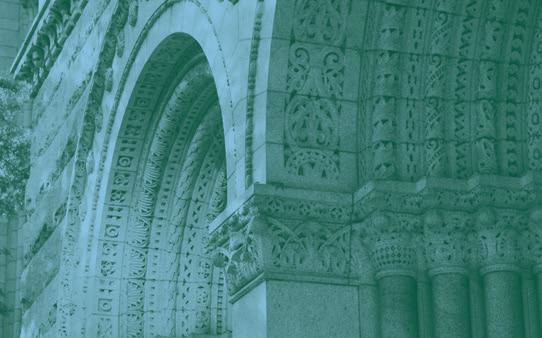
The Newberry Library and The Pattis Family Foundation presented the third annual $25,000 Pattis Family Foundation Chicago Book Award to author Thomas Leslie on Saturday, September 14. Leslie’s book, Chicago Skyscrapers 1934-1986: How Technology, Politics, Finance, & Race Reshaped the City, explores race and politics while including detailed analyses of how foundation materials, framing structures, and electric lighting developed throughout the years. Leslie shows how the skeletal frames of The Rookery, Ludington, and Leiter Buildings led to the braced frames of the Masonic Temple and Schiller Building and eventually to the concealed frames of the City Opera, Merchandise Mart, and other Chicago landmarks. The Pattis Book Award celebrates works that transform public understanding of Chicago, its history, and its people. Mark and Lisa Pattis of The Pattis Family Foundation presented the award to Leslie at the Newberry’s annual Chicago Storytelling event. In addition to Leslie, John William Nelson was recognized as the shortlist award recipient for authoring Muddy Ground: Native Peoples, Chicago’s Portage, and the Transformation of the Continent.

Thomas Leslie received the 2024 Pattis Family Foundation Chicago Book Award for his new book, Chicago Skyscrapers, 1934-1986: How Technology, Politics, Finance, and Race Reshaped the City. Thomas was joined in conversation by Edward Keegan, newly appointed architecture columnist for the Chicago Tribune, at a free program at the Newberry.
Edward Keegan: Is there an idea, theme, or thread in your book that you hope somebody else picks up and uses to spin a new yarn?
Thomas Leslie: There were something like eighty-five buildings downtown that qualified as skyscrapers. But there were 400 throughout the city, mostly residential, and I could only just start to touch on those. There’s plenty of room left for someone to write about the approach to housing that led in some cases to skyscrapers, but in many other cases to much smaller approaches that really continued the tradition of this city as a city of neighborhoods.
The biggest change in Chicago in the last fifteen to twenty years has been just how many high rises are popping up in the neighborhoods—for the good. Go out to the Blue Line and you can see these transit-oriented developments, which is a great way to create more affordable housing where people don’t need to have a car.
EK: What do you think the role of the skyscraper is versus mid-rise or even low-rise [buildings]?
TL: I think there are two answers to that. One is in developments like Lincoln Yards or The 78, where you want to create density, where you’re planning transit and infrastructure that’s going to allow people to live in close proximity. We know that is better for economics. We know that’s better for the environment. When people who want to live close to the center are able to do so and are able to afford it, that’s great. And we’ve seen a lot of really interesting, really progressive efforts at high-rise housing happening within walking distance of downtown.
This semester my students are working with the developers of The 78 on a project, thinking about how you build for people who may be working downtown. The other role that I think the skyscraper has to play is adaptive reuse, and I think this is probably the biggest skyscraper story the city has right now. We have the opposite problem that we had in the 50s and 60s. We have plenty of stock downtown. But we don’t necessarily have the the commercial tenants to fill it, right? We’ve seen downtown that the vacancy rates are up, people are working from home. I think one of the big questions is, how can we reuse those buildings? How can we repurpose those buildings? People love to live downtown even more than they love to work downtown, so can we find ways to turn the surplus of space we have into a solution to the affordability problem?
EK: I was not at your last talk at the Newberry, but I’ve been told that during the course of that event you posited the Fisher Building, which is this great Gothic terracotta and glass building at the corner of Van Buren and Dearborn, as the first skyscraper. Do you still hold to that? And then beyond that, what’s your favorite skyscraper in Chicago?
TL: I have claimed and been on record as saying that the Fisher Building is the first modern skyscraper. I’m the only person on the planet who thinks this, but my reason is that when it was built in 1896, Inland Architect ran an article about it that said, ‘this is the first tall building in human history that’s been built without walls.’ What they meant was that it was the first skyscraper that had been built without brick walls. There’s no brick in the structure. It’s a steel frame that’s self-braced, and there’s no brick in the skin. It’s all terracotta and glass.
My favorite one. Well, this is like asking which one is your favorite kid. Every parent has a favorite kid but isn’t going to admit it in public. When I bring students or non architects to Chicago, I have a little walking tour that I like to give. That starts at the Michigan Avenue Bridge, goes down by Marina City, along the river down State to see Carson’s, Louis Sullivan’s masterpiece, the Reliance, and over to see Daley Center. Those are kind of the big ones. Sometimes we’ll go down and see the Monadnock and the Federal Center.
I always like to finish with the two that I think speak to the city’s tradition for beautiful detailing and really thinking through buildings to the nth degree. I like to finish first at Inland Steel, which I think is still the best post-war skyscraper, not just in Chicago, but on the planet. Then I walk a couple blocks over and look at The Rookery, which I think is as good a nineteenth-century building as there is anywhere.

are now open for The Pattis Family Foundation Chicago Book Award, given each year to a book that transforms public understanding of Chicago. Eligible works include any book, whether fiction or nonfiction, that is available for purchase by the public and bears a copyright of 2023 or 2024. Visit newberry.org for more information.
The Newberry is home to the writings, genealogical notes, documents, photographs, and charts of Thomas Lee Ballenger, a historian, author, and teacher who studied Cherokee history in the nineteenth- and early-twentieth centuries. A group of researchers traveled from Oklahoma to Chicago in August to comb through the Ballenger Papers. The focus of their project is the Cherokee Freedmen, African American men and women who were formerly slaves of the Cherokee before and after removal to Indian Territory. The researchers viewed Ballenger’s materials relating to the Cherokee Nation’s Colored High School, which once stood six miles northwest of Tahlequah, Oklahoma. The Newberry’s Edward E. Ayer collection, which includes the Ballenger Papers, is one of the largest collections of books and manuscripts on American Indian and Indigenous Studies in the world.

NEW ACQUISITION
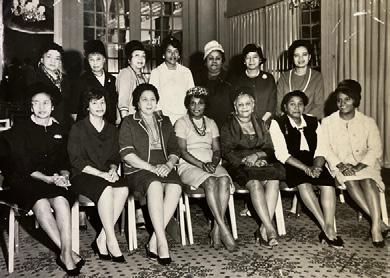
The Newberry has acquired archival photos and documents related to the Dentist Wives’ Club of Chicago, a group founded in 1930 to provide a social outlet for women and awareness of dental health and the furthering of the dental profession in the Black community. The materials are comprised of twenty-six mostly black-and-white photographs and a historical account published for the organization’s fiftieth anniversary.
The Dentists’ Wives Club was a women’s adjunct to the Chicago chapter of the National Dentists’ Association (NDA) and part of the association’s auxiliary. The likely prior owner of the book and photographs was Mayme P. Williams; she oversaw the historical publication as she was the club’s History Committee Chairperson at the time. She is seen in nearly every original photograph; there also is a mimeographed circular letter from 1958 over her signature. Mayme’s husband, Charles E. Williams, was a dentist on the South and West Sides of Chicago from 1924 to 1978 and served as the NDA’s Chairman of the board for ten years.
The new acquisition will enhance the Newberry’s holdings in its core subjects of Genealogy and Local History and Chicago and the Midwest. The Newberry seeks primary and secondary local history sources of Black communities as part of its emphasis on diversity and inclusivity across all of its collecting areas.
The collection history shares that members focused their efforts on encouraging African Americans to patronize Black dentists, an initiative supported by newspapers such as the Chicago Bee, the Chicago Defender, and the Chicago Whip. The text continues with a decadeby-decade chronology showing how the group grew from a small social club into a large philanthropic organization.
The Newberry Library and Chicago Dance History Project (CDHP) are currently working to transfer CDHP’s archival materials to the Newberry’s Midwest Dance collection. The materials, comprised of nearly one hundred oral history recordings, plus photographs, performance videos, and ephemera, span generations and seek to preserve the history of Chicago’s dance community.
This project marks the latest collaboration between the Newberry and CDHP. “Teaming up with Chicago Dance History Project ensures the lifespan of these interviews,” said Alison Hinderliter, Lloyd Lewis Curator of Modern Manuscripts and Archives. “We’re providing a safe storage place, plus digital backup, which is really what you need for primary source materials such as these.”
Footage of the oral histories alone accounts for nearly twelve terabytes of data, making this the start of a large digital migration. “The transfer of materials is a labor-intensive task,” Michael McStraw, Executive Director of CDHP, said, “but we want to do it right, do it well, and ensure the best public access as possible.” CDHP is also working to transcribe each interview, which will improve overall access.
Hinderliter and the Modern Manuscripts team have transferred roughly half of CDHP’s interview footage to the Newberry by and will now focus on photographs, performance videos, and ephemera, as well as migration of the remaining oral history footage. The Newberry’s Digital Initiatives and Services team and the Modern Manuscripts and Archives team will then process and prepare the interviews to be made publicly available online through our Digital Collections. “Public accessibility is our main priority,” Hinderliter said, noting that the oral
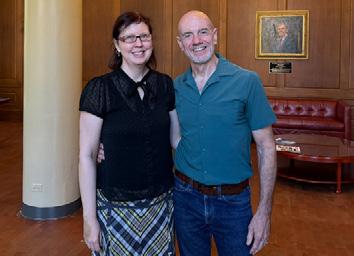
histories will be considered unrestricted and, when fully processed, available for viewing online at any time, from anywhere.
This new acquisition will enhance the Newberry’s robust dance collection that chronicles the history of a storied and thriving dance community in Chicago. The oral histories will complement the archival collections of prominent Chicago dance companies like Hubbard Street Dance Chicago, Ruth Page’s Chicago Opera Ballet, Ensemble Español Spanish Dance Theater, and Joel Hall Dancers by highlighting first-person narratives from longtime members of the Chicago dance community. The addition of oral histories will be of interest to cultural historians, dance historians, dance fans, choreographers, artistic directors, and dance practitioners looking to understand their shared history.
The Newberry has acquired a scrapbook featuring an intimate chronicle of a married interracial gay couple during the height of the AIDS epidemic. The scrapbook of Chicago residents Kenneth

Martin and John Dooley includes 300 photos as well as dozens of pieces of ephemera related to theater and travels to Acapulco, Amsterdam, London, Paris, Madrid, and several places in the United States. There are also photos of the couple at the 1986 Chicago Pride Parade and passes to a Halloween Ball hosted by Dudcrest, a local LGBTQ+ group. Several photos and keepsakes in the album relate to AIDS activism. Scattered throughout the volume are loving messages between Ken and John on Valentine’s Days, birthday cards, anniversary cards, as well as romantic keepsakes like sentimental cartoons, candy, and gum wrappers and mementos of dates and parties. Ken and John had a wedding ceremony in 1987, twenty-six years before same-sex marriage was legalized in Illinois.
The scrapbook, purchased from a book dealer, fits into the Newberry’s collection strength around Chicago and local history while documenting theater history and the LGBTQ community. The Newberry seeks primary and secondary local history sources of marginalized, BIPOC, and LGBTQ communities as part of its emphasis on diversity and inclusivity across all of its collecting areas.
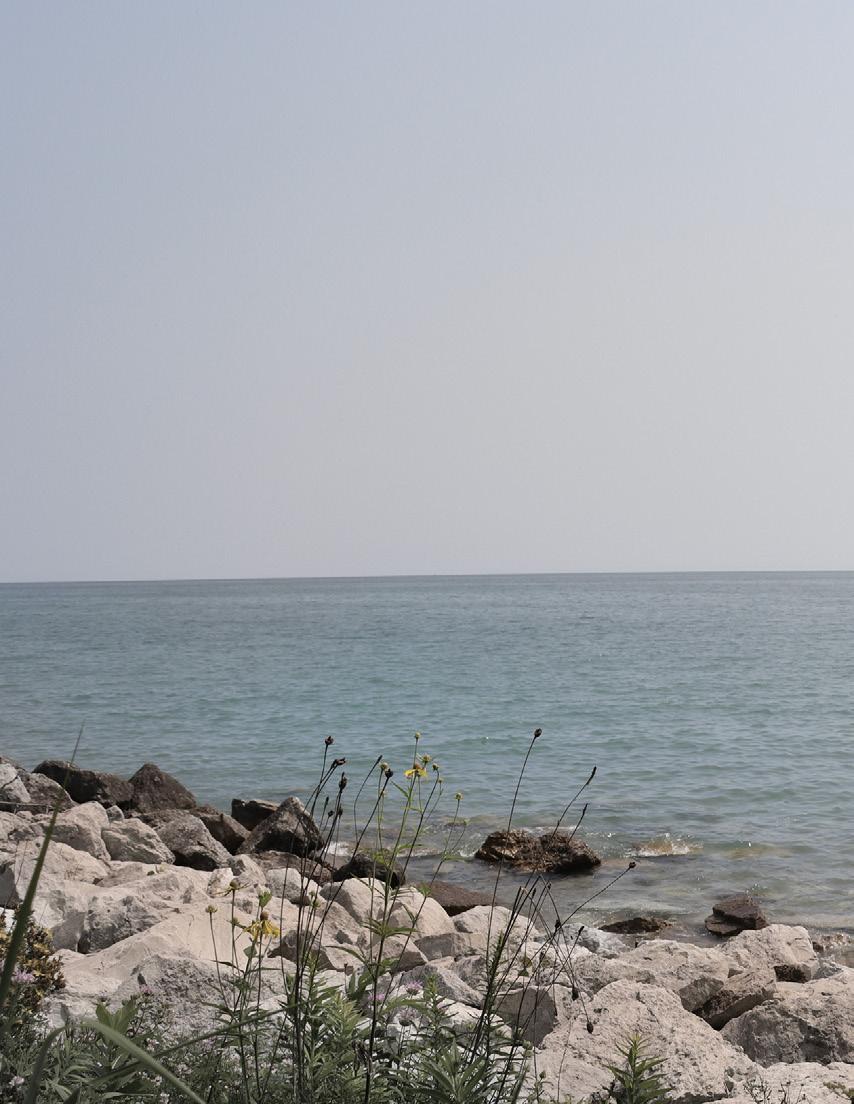
By Nico Marabella
How the landmark, multi-faceted Indigenous Chicago project came together in collaboration with Native peoples.
In January 2020, a group of Native community members and Newberry staff met for a meal at the library to discuss solutions to a decades-long problem: the erasure of Chicago’s Indigenous history and its place as a home to the diverse Native peoples and vibrant communities present today. Four years and one pandemic later, the Indigenous Chicago exhibition opened to the public in September 2024 as part of a multifaceted initiative to center Native experiences in Chicago—past, present, and future.
The Indigenous Chicago project was developed in partnership among the Newberry, advisors from the Chicago Native community, and representatives from tribal nations with historic connections to Chicago. This collaboration has resulted in an initiative that aims to reconsider Chicago’s history. And by reframing the past, Indigenous Chicago iterates through its many components that Chicago is, and always has been, a Native place.

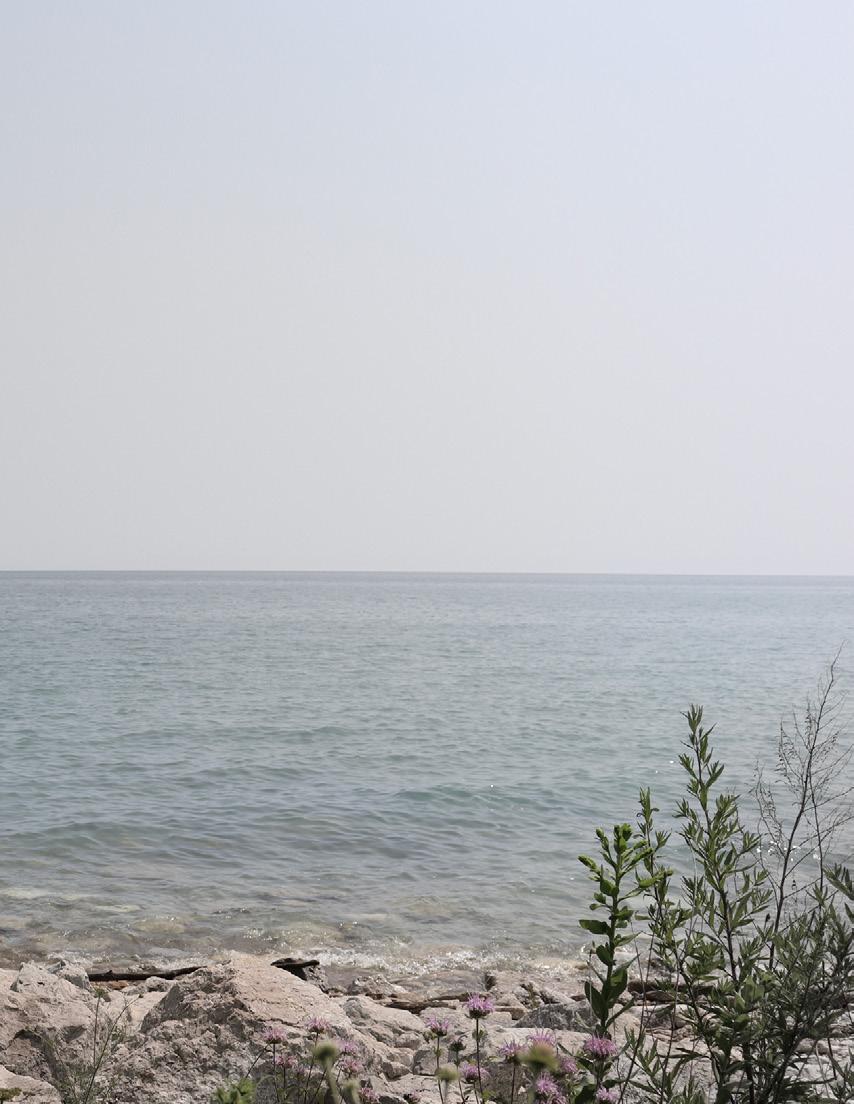



The project arose from community conversations about misrepresentations of Chicago’s Indigenous history and the invisibility that Native people in Chicago continue to feel. Home to the Potawatomi, Odawa, Ojibwe, Peoria, Kaskaskia, Myaamia, Wea, Sauk, Meskwaki, and Ho-Chunk peoples, the place we now call Chicago has long been a historic crossroads for many Indigenous people and remains home to an extensive urban Native community. Yet most Chicagoans are unaware of this history.
At that January 2020 meal, the Newberry partnered with the Chicago American Indian Community Collaborative (CAICC), a network of seventeen Native American organizations and programs that are dedicated to furthering diverse causes centered on the greater well-being of Indigenous communities in the Chicago area. Discussion focused on the possibility of a centralized resource that would educate Native and non-Native communities alike about the Indigenous past, present, and future of Chicago. The potential of this initiative garnered enthusiasm from community members, prompting them to identify ambitious project goals and bold project components.
1. Make the invisible visible
2. Situate Chicago as a Native place since time immemorial
3. Serve a broad, multi-generational project
4. Grow a community archiving practice that crosses multiple organizations
5. Support the growth of CAICC
6. Above all, advance the priorities of the Chicago Native Community


The goals were to make the invisible visible; situate Chicago as a Native place since time immemorial; serve a broad, multi-generational project; grow a community archiving practice that crosses multiple organizations; support the growth of CAICC; and above all, advance the priorities of the Chicago Native Community. Five project components were discussed at the meal and ultimately included in the project: a temporary exhibition at the Newberry, a website with digital mapping and walking tours, an educational curriculum for high school social studies, new oral histories, and a series of programs held at the Newberry.
Once these goals and components were initialized, project co-directors Rose Miron, Director of the D’Arcy McNickle Center for American Indian and Indigenous Studies at the Newberry Library; Meredith McCoy (Turtle Mountain Ojibwe descent), Assistant Professor of History and American Studies at Carleton College; Analú María López (Huachichil/Xi’úi), Ayer Librarian and Assistant Curator of American Indian and Indigenous Studies at the Newberry Library; and Blaire Morseau (Pokagon Band of Potawatomi), Assistant Professor of Religious Studies at Michigan State University, solicited community input to assemble the project’s Advisory Group.

“Native peoples and communities are the best representatives of their own histories and cultures, and our partners have led the way as we worked to identify new opportunities to deepen our relationships with Indigenous nations, supported Native-led research, and removed structural barriers to collections held at the Newberry,” said Miron.
To tackle the project’s broad scope and complexity, the Advisory Group was divided into five subcommittees, each of which focused on the creation of one of the five project components. Community members were involved every step of the way, collaborating and providing feedback on these project components through visits, brainstorming sessions, listening sessions, and community meals.
“We were happy that the community as a whole was really excited about the project and overall, just wanted to move forward,” said López.
The exhibition’s launch in September of this year coincided with the launch of the Indigenous Chicago website (indigenous-chicago. org), which features custom-designed motifs by Native artist Anjeni Del Real (Ojibwe, Santee Sioux, and Blackfeet) and provides access to digital maps, detailed curriculum, and a look at new oral histories with Native community members. Many of these components are ongoing and demonstrate that Indigenous Chicago is a living project that will continue to grow in collaboration with Chicago’s Native communities.

Indigenous peoples have robust storytelling practices that are often absent in archives such as the Newberry. Native perspectives are difficult to encounter in such spaces, making it so that many Indigenous communities have little control over how their history is documented. That is why oral traditions are so valuable to many Native communities. They are vital in their ability to reflect Indigenous perspectives and to increase community access to tribal knowledge.
Conducting new oral histories was a priority for the Indigenous Chicago team from the very beginning. Community members present at the initial planning meeting emphasized the necessity for collecting new narratives rooted in the Chicago American Indian community. This new oral history project would echo a past collaboration between community members and the Newberry Library. From 1982 to 1984, Native Community members and the Newberry conducted twenty-three oral interviews with longtime American Indian residents of Chicago. However, no other oral history project has been completed since then. In identifying the project components for Indigenous Chicago , community members were committed to building a community archiving practice in which oral histories would serve as a cornerstone.
“ T hese were personal stories. I was very honored that they trusted me to listen and trusted the project to have their stories be a part of it.”

Dorene Wiese (Ojibwe), Chief Executive Officer of the American Indian Association of Illinois and founding member of CAICC, worked on the 1980s oral history project and served on the Oral History subcommittee for the Indigenous Chicago project. “I want our children and the children of tomorrow to be able to learn about their own American Indian history,” said Wiese.
The Indigenous Chicago team identified a variety of methods to capture the histories. One of these methods involved a collaboration with the American Indian Health Services of Chicago (AIHSC), an organization dedicated to providing quality healthcare to Native communities in Chicago. AIHSC and the Newberry’s McNickle Center co-hosted Oral History Days, where community members were invited to attend and share their memories. Interviews were also conducted at powwow booths, in people’s homes, at their workplaces, and at the Newberry.
Haku Blaisdell (Kanaka Maoli), Associate Director for Outreach and Strategy at the McNickle Center, has conducted interviews with 12 individuals as of this writing. Reflecting on her experience, she discussed the importance of oral histories: “I was excited to start these interviews. And looking back on it, it was a real privilege. Some of the community members I talked to have been around since the start of Chicago’s urban Native population. It’s important to not forget those who came before us. These were personal stories. I was very honored that they trusted me to listen and trusted the project to have their stories be a part of it.”
Blaisdell would often bookend her interviews by asking the following question: “What does Indigenous Chicago mean to you?”
“I got a wide array of answers. To many, it means community, intertribally, forming a strong group in the face of removal and relocation. To some, they identified the broader mosaic of Chicago’s ethnic backgrounds. And others made clear that Indigenous Chicago is Chicago. Simple as that.”
As of this writing, two interview transcripts are available to view on the project website. These two transcripts are just the beginning of what Indigenous Chicago ’s oral history component has to offer. Interviews have been conducted with over 50 individuals, and they are currently being transcribed. These transcripts hold new narratives, memories, and stories told by the present-day Native community in Chicago.

The digital maps and resources now available on the Indigenous Chicago website emphasize Native presence in Chicago since time immemorial by tapping into the Newberry’s world-class map collection and expertise in cartography. These maps were created by Native community members in collaboration with the Indigenous Chicago project team.
One example is the Urban Archive map, which highlights over five centuries of Indigenous history in Chicago. It is a point-based map that allows users to explore various points in time in relation to location. By clicking on one of 150 points, users can learn more




Place Names Map
about a location and its connection to Indigenous history. For example, clicking on the point between North Seminary and West Waveland near Wrigley Field will teach users about the site of the first Chicago Indian Village protest in 1970.
Native people had reciprocal relationships with the land that enabled their ability to survive and in turn benefited the environment. Indigenous approaches to the land prioritized the health and well-being of humans, lands, waters, animals, and plants. Removal and relocation due to settler colonialism interrupted these relationships, causing changes to the environment. This is especially evident in Chicago, as depicted by the Indigenous Chicago ’s Landscape Change Map. This map reconstructs the landscape and waterways of Chicagoland at the moment when Native people were removed from the city, and just before drastic changes were made to Chicago’s waterways and landscape. Chicago had an abundance of wetlands, prairies, forests, and waterways. Settler colonial ambitions transformed the land by draining the wetlands, damming the waterways, and cutting down the forests for resources. The prairies on the map no longer exist.
Each of these maps helps to reframe narratives around Indigenous history, and by doing so, provide opportunities to build future understandings that keep Native peoples and their experiences and histories visible. The digital resources will continue to expand as the Indigenous Chicago project team identifies more research and stories.

Building a shared future where Indigenous voices, histories, and perspectives are present in K-12 classrooms requires that Indigenous people themselves have authority over the narratives and practices that reflect their lives. Such narratives and practices have largely been absent or actively erased in school curricula for many years. Recent studies show that as of 2015, 87% of state history standards nationwide only addressed Indigenous peoples before the year 1900. As of 2021, 72.5% of state civic standards failed to address tribal sovereignty or treaties. More recently, there have been notable shifts in teaching thanks to the decades-long advocacy of Native families, tribal leaders, educators, and students. Twelve states now have state-issued curricular resources for teaching Native histories, and 14 states now have legislation encouraging or mandating that teachers share Native histories in their classrooms.
In 2023, Illinois joined this list through the passage of HB 1633, a law that requires a minimum of one unit of instruction about Midwest Native experiences and histories in all elementary and high school American history or government social studies courses. Despite this mandate, many teachers are often underprepared to teach Native histories in their classrooms. The Indigenous Chicago curriculum aims to provide resources to teachers to ensure that future generations can access knowledge that was not made readily available to them. The approach is already showing results.
“O ne of the things that I hope comes out of the Indigenous Chicago project is the fact that “we are still here” does not just mean “we are still alive.” It means we are still a community, we are still joyful people... and that when people see us through this project, they get a sense of the history and a sense of our creative resilience.”
Steven Schwartz teaches History and Civics at Oak Park and River Forest High School and participated in the Indigenous Chicago curriculum pilot earlier this year. “I’m incorporating [the curriculum] more into my classes. I have more access to information about the Potawatomi influence on Illinois and Chicago before European settlement. Those sources are really enhancing the curriculum in my Chicago class and my U.S. History classes.”
Indigenous Chicago’s curriculum focuses particularly on tenth-grade Social Studies classrooms and is divided into five modules that include lessons on Chicago as a Native place, land and environment, convergence, and activism and resistance. The modules can be examined over a week or over several weeks, depending on how teachers choose to implement the curriculum. The modules are organized thematically rather than chronologically, allowing teachers to decide when a module is most appropriately taught in the context of their own teaching structures.
The development of this curriculum has involved years of close consideration and collaboration with Native community members. For more than two years, the Curriculum Subcommittee evaluated state standards in Illinois, selected grade levels and subject areas, brainstormed core learning objectives, and drafted and revised the curricular resources. During this time, the committee held more than 30 meetings to develop the final version of the curriculum.
Once the curriculum was ready to be tested in the classroom, a pilot program took place for the 2023-2024 school year. Eight high school social studies teachers, including Steven Schwartz, were selected to run the curriculum in their classes. The teachers provided feedback monthly—and at the end of the school year— that greatly informed the final curriculum made public this year.
“There were a lot of primary sources in the pilot,” Schwartz said. “That was one of the invaluable parts of this program. It
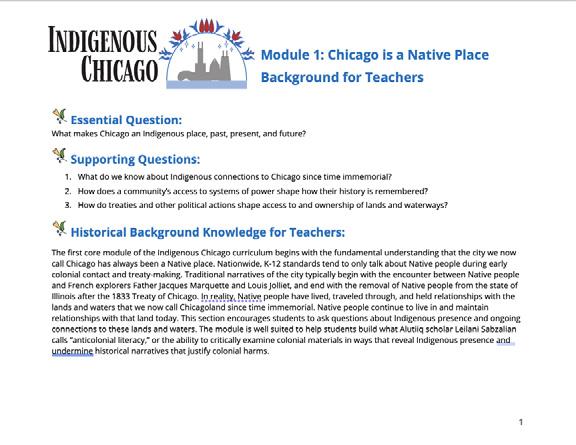
Example of one of the modules that teachers can use and customize for their classes.
provided you with primary sources. Sometimes you have a hard time sifting through primary sources and extracting what you would use in the classroom.”
The curriculum encourages Indigenous history to be taught as a year-round topic, rather than being limited to one unit around certain times of the year. Making Native people’s stories visible ensures that a habit of awareness develops over time. Meredith McCoy was instrumental in the curriculum’s development and hopes that it will lead to greater visibility for Native people in Chicago.
“It gives me hope to think about what people’s decisions and thoughts around Native people in Chicago become. I hope that it leads to appropriately ethical representations of Native people, but more importantly that their visibility becomes a reflection of how they see themselves,” said McCoy.
“One of the things that I hope comes out of the Indigenous Chicago project is the fact that ‘we are still here’ does not just mean ‘we are still alive.’ It means we are still a community, we are still joyful people, and we have always used laughter to sustain ourselves and to make sense of and cope with colonial violence. I’m hoping
A robust array of free programs and Adult Education classes have complemented the exhibition and other components of Indigenous Chicago . Four programs featured Indigenous artists and scholars discussing their work and making connections to history and their cultural practices. On September 28, the Newberry hosted “Native American Dance and Regalia,” which featured the Black Hawk Performance Company, an introduction by Dorene Wiese (Ojibwe), and a presentation by photographer Sharon Hoogstraten (Potawatomi). Adult Education offerings have provided lifelong learners the chance to dive deeper into exhibition content while experiencing local history through neighborhood walking tours.
Recordings of the Public Programs are available on the Newberry’s YouTube channel at www.youtube.com/@thenewberrylibrary.
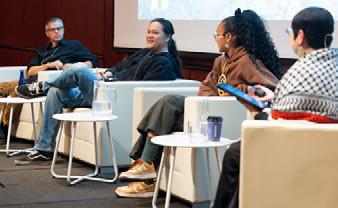
that thread of joy comes through in the work that we’re doing, and that when people see us through this project, they get a sense of the history and a sense of our creative resilience.”
Nico Marabella is Administrative Coordinator for the Newberry’s Public Engagement Division.

The Indigenous Chicago project is generously supported by the Terra Foundation for American Art, the Gaylord and Dorothy Donnelley Foundation, the Richard H. Driehaus Foundation, The Elizabeth Morse Charitable Trust, The Field Foundation of Illinois, The Whiting Foundation, The Research for Indigenous Social Action and Equity Center at the University of Michigan, and Carleton College.
Planning for Indigenous Chicago was generously supported by the Mellon Foundation.
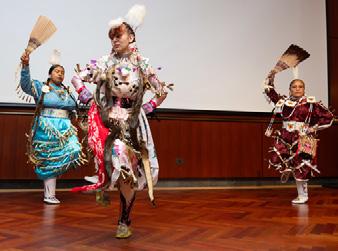

By Suzanne Karr Schmidt
An evening walk with the dog leads to the discovery of books dating back as far as 1525.
It’s not every day that a trove of Renaissance German books mysteriously appears on a Chicago sidewalk. But that’s exactly what happened on March 1, 2024, as Chicago resident Robert Miller was taking his trusty dog Sparky (aka Spark-a-Doodle) for a necessary evening walk. A Kentucky rescue dog seemingly on the hunt, Sparky pulled Miller to an unfamiliar side of the street. There the pair came across a group of very old books lying on the sidewalk. Nobody else was nearby, and Miller was concerned that the bindings would get damp if they stayed out overnight. Thus, he picked them up and took them home.
As a former history major, Miller knew the books were likely important and worth protecting. As it turned out, they are
indeed quite rare, ranging in date from 1525 to 1725, and written in German, Latin, and French. They even appear to retain their early or original bindings. Miller took one of the volumes to show officers at a neighboring police station soon thereafter, where the find was announced at roll call for several days. Yet no one came forth with any additional information. Miller then contacted the Newberry to see what he should do next.
When we first corresponded, I was a bit incredulous about such an unusual discovery and asked Miller to send more pictures, which could help identify the books. Curiously, while there are some signs of their sixteenth-century ownership, all the books lack recent institutional markings. Thus, it seemed more likely that they belonged to an unidentified bookseller or private collector than another library. After initial attempts to identify an owner petered out a few weeks later, Miller offered to give the books to the Newberry.

The Newberry has historically collected far fewer pre-1800 German books than ones from Italy and France. The chance to add this group of rare books in pristine condition to the collection was very appealing indeed. But as the books had materialized so surprisingly, with non-existent provenances, it would have been unethical for the library to simply accept them. We had to do our due diligence

and make additional attempts to find their most recent owners. The first step was to check whether these books had been stolen from a local institution. We soon learned that none of them were books held by the Newberry, and while two other Midwestern collections each held a single title, they never had the complete set.
We then alerted the Antiquarian Booksellers Association of America and the International League of Antiquarian Booksellers to be sure that these books were not individual items stolen from a book dealer. They quickly circulated the details of the find. However, no one from these organizations cavme forward with proof of ownership. We had decided that if this should still happen in the future, we would carefully consider the claim and return the books if we found the proof convincing.
Indeed, we were convinced that we would now be able to accept the books as a donation. However, while in the final stages of editing this article for publication on November 1, I came across the binding dated 1561 on an old page from the Austrian book dealer, Antiquariat Inlibris’s website! They kindly confirmed that they had sold the book to Chicagoan Marvin Rawski back in 2021 and put me in touch with him. While the phone number didn’t work, the email did, and we were able to reunite this enthusiastic octogenarian book collector with his missing books just a few days later.
There is something truly surprising about a group of seemingly stolen rare books being abandoned in the wilds of Chicago. As it turned out, there was absolutely no foul play involved. Rawski
was tidying up some old archival boxes and accidentally took one with the books out to the trash as well. It seems that the box fell on the ground, spilling its contents. By the time Rawski thought to go back for it, his relatively close neighbors Miller and Sparky had swooped in to protect the books.
While we knew nothing until this revelation about the recent provenance of these volumes, there are clues as to where they came from originally. Six of the seven volumes are in stamped pigskin leather, a common bookbinding style in Germany. On closer inspection, we realized that one of them is a Sammelband , or bound-with volume that contains three different texts bound together by an early owner in 1561 and both signed and dated with their initials. Books in this period were purchased “in sheets,” as stacks of pages, and could be bound later with others to the purchaser’s liking.
The Latin texts were printed by different printing houses in Cologne, Germany, around 1530. This suggests that the owner, perhaps a student at the University, was actively collecting these books at publication. Inked-in annotations imply that the first book passed through a variety of readers with strong opinions on the letters and sermons by a variety of older Church Fathers it contained. Someone else crossed out the title page and six pages in the second book in the volume, a polemical, anti-Lutheran letter by the still-active and sometimes controversial scholar and priest Desiderius Erasmus of Rotterdam (d. 1536).
The third text is a relatively unsullied set of the letters of the fourth-century Saint Gregory of Nazianus (the Archbishop of Constantinople), translated by learned Nuremberg lawyer Willibald Pirckheimer (d. 1530). A Nazanius letter also appears in the first volume. Interestingly, the binding is itself dated 1561 and signed with an owner’s initials MST on the front, so the grouping may have remained unbound or bound in paperback-like vellum until then.
The single work in French from this impressive hoard, which was printed in the Netherlands in 1713, represents another Erasmus text. Not only that, but it is also his most famous, a satirical work on the Praise of Folly. The frontispiece is engraved, unlike the woodcuts in the other volumes, showing the author on the left, and an allegorical group of women on the right with globes and a professional fool’s staff, suggesting how universal the condition of idiocy and foolish misunderstanding was at the time.
Another major theme of sixteenth-century German publishing was the response to the teachings of Protestant Reformer Martin Luther (d. 1545), which relied on both text and image for its impact. The earliest of Rawski’s lost and found books, from 1525, is a real-time negative response to Luther’s sermons, and its upper title page border shows Saint John the Evangelist writing in a clear reference to Luther’s
famous translation of the Bible into accessible German. Like the Erasmus Epistle, readers of this book positively devoured it, inscribing the title page, dog-earing multiple pages in a row, and writing copious marginal notes with rampant callouts beside important parts of the text.




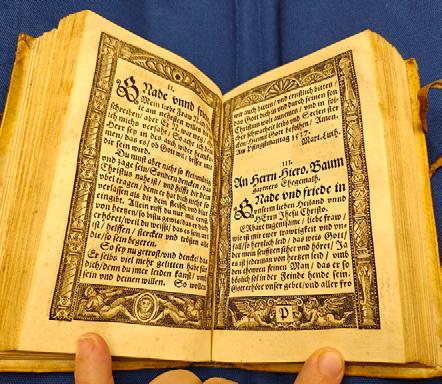
Another work is a Lutheran encomium, published posthumously in 1559 Leipzig, which is much more visually ornate. While all of Rawski’s lost and found sixteenth-century volumes boast elegant typography and woodcut initials, this publication bears magnificent woodcut borders that repeat throughout the volume. The bottom borders vary, but often bear tiny portraits, two of which could be interpreted as images of Luther in his early days as a Catholic priest, and also, in profile, as the leader of his own Protestant following. The title of the book gives Luther credit for his sermons, and notes that they have been collected by the editor after his death with much effort. It seems to have been worth it. Similarly, Rawski spoke with great warmth about these unique woodcuts, about the politics of his Erasmus items, and about his one close encounter with a handwritten Martin Luther letter.
Our deep thanks go out to Robert Miller and Sparky, who should be praised for their well-timed constitutional and quick thinking to protect these historical treasures. These wonderful books are only held in a few collections around the world. When Marvin Rawski visited the Newberry on November 5 to be reunited with his collection of books, he generously donated two of the Luther volumes to our collection: Assertionvm (1525) and Etlich Trostschrifften (1559). We thank Rawski for his generosity and look forward to accessioning these two books and sharing them with researchers in our reading rooms. It is deeply satisfying that the Newberry could at last reunite the other books with their true owner.
Suzanne Karr Schmidt is George Amos Poole III Curator of Rare Books and Manuscripts at the Newberry.
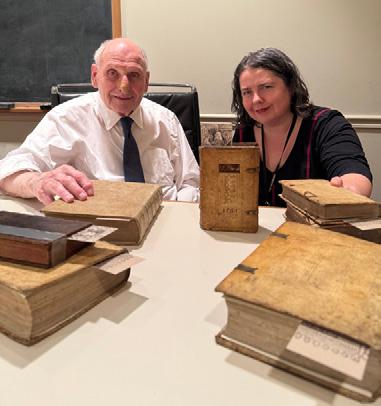
By Lili Pangborn
Nick Kryczka’s research at the Newberry informs major new report on the teaching of American history in classrooms nationwide.
Public education in the United States has long been the domain of conflict, debate, and controversy. Questions about pedagogy, test scores, standards, and curriculum surface and resurface in polarizing ways. Americans discuss schooling in perhaps more settings than any other subject: at home, in the news, in the classroom, among school boards and faith-based groups, and on the presidential debate stage. Despite often lacking empirical evidence—and for very different reasons—people from all sides of the political spectrum seemingly agree on one thing: the way our education system teaches United States history is wrong. During his time as a scholar-in-residence at the Newberry, Dr. Nick Kryczka and his research team sought to understand this paradox and how the American public school system can teach history better. The result is a groundbreaking survey of teachers, American Lesson Plan: Teaching U.S. History in Secondary Schools , released in September 2024, that’s been featured by the New York Times and National Public Radio’s All Things Considered .
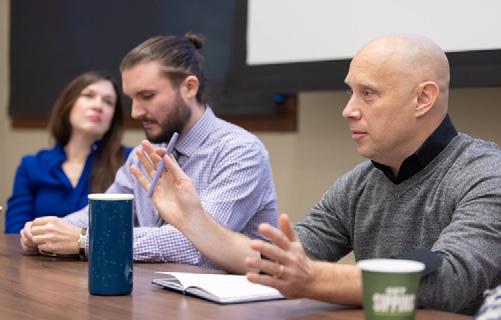
Kryczka’s path to authoring the report intersected with Chicago and the Newberry. A graduate of the Chicago Public School (CPS) system and the University of Illinois UrbanaChampaign, He returned to CPS in 2003 as a high school history teacher. He later pursued a PhD in history with teaching stints at the University of Chicago and Lake Forest College. Kryczka
“ People at every level of debate make often baseless claims in service of a partisan agenda. Our goal was to settle things with an empirical study looking at what educators are teaching, how they are teaching it, and what resources they utilize to do so.”
began as a scholar-in-residence at the Newberry in 2022 after several years of involvement in the library’s Teacher Programs.
Around the same time, he took a new role as Research Coordinator at the American Historical Association (AHA), presiding over the Bloomberg Philanthropies-funded survey. “People at every level of debate make often baseless claims in service of a partisan agenda. Our goal was to settle things with an empirical study looking at what educators are teaching, how they are teaching it, and what resources they utilize to do so,” Kryczka explained.
After nearly two years of project development, research, interviews, and analysis at the Newberry, the report uncovered somewhat surprising findings:
• Decentr alized school systems make it difficult to ensure certain educational standards on a national scale.
• The vast majority of history curriculum and the way it is taught remains politically neutral.
• Man y teachers have a clear desire for content-specific professional development.
Given the decentralized landscape of education—nearly 100,000 individual schools, managed by over 13,000 school districts all with autonomous decision-making power—the AHA study encountered unique challenges in representing national trends. To get a baseline understanding, the research team analyzed the academic standards in all fifty states, including curriculum and assessment requirements, as well as the nearly 800 laws and regulations passed since the 1980s aimed to further influence U.S. history education.
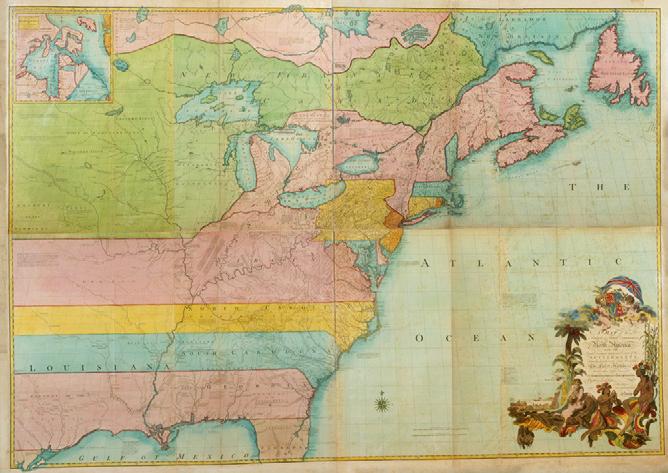

Kryczka maintained, however, that state-level policy would be a poor proxy for understanding the lived experience in an ordinary classroom, opting to conduct a closer analysis of nine states: Alabama, Colorado, Connecticut, Illinois, Iowa, Pennsylvania, Texas, Virginia, and Washington. These states each represent one of the nine U.S. Census regional divisions and provide a mix of political and social contexts impacting education standards in their respective regions. In each of the nine states, the AHA fielded a survey of public middle and high school history educators, capturing over 3,000 respondents across urban, suburban, and rural areas. “We wanted to find out what educators value when teaching, what resources they use, what difficulties they encounter, how they collaborate with colleagues, and how much direction they get from supervisors,” Kryczka explained.
The team also conducted in-depth follow-up interviews with over 200 teachers. Kryczka found that, for many interviewees, “Knowing the curriculum content with authority allowed teachers to feel confident when encountering pressure from political partisan perspectives.”
Although much of Kryczka’s work on the study occurred during his residency at the Newberry, he had relationships with library staff and scholars long before the project began. He first joined the Newberry community in 2019 through a series of collaborations with the Teacher Programs Department. With help from Sophie Croll, Program Manager, Nick developed numerous Digital Collections for the Classroom (DCCs), including “Maps as Heritage: Commemoration and Travel in American Cartography”
and “Maps and the Beginnings of Colonial North America.” These high-quality resources for classroom instruction feature primary sources from the Newberry’s collection that support key history and literature learning goals in critical thinking, analysis, close reading, and visual literacy. The DCCs provide educators with the tools necessary to engage in a nuanced yet objective manner with documents critical to understanding our nation’s history.
Since then, Kryczka has led many of the Teacher Programs’ professional development seminars, which tap into the library’s collections and aim to help teachers build on their professional knowledge and update their pedagogical toolkits. Alongside Laura McEnaney, former Vice President for Research and Education at the Newberry, he helped educators refine their techniques and facilitate inquiry among students.
The prior work Kryczka had done at the Newberry, including relationships forged with other fellows and scholars-inresidence, Teacher Programs staff, and Chicagoland educators, proved integral to the success of the AHA study. Weekly colloquia at the Newberry provide space for staff, fellows, and scholars to discuss new humanities research as it develops. The community of inquiry-minded scholars at the Newberry proved to be invaluable to the early development of the project.
Moreover, as the third-largest city and school district in the country, Chicago provides a diverse and wide-reaching teaching network the AHA research team engaged to refine the nature and scope of its survey. With the help of Dr. Kara Johnson, Director of Teacher Programs at the Newberry, Kryczka tapped into a
“ N ick’s study cuts through the larger political debate and engages with teachers on the ground...It directly informs what Teacher Programs will offer in the future.”
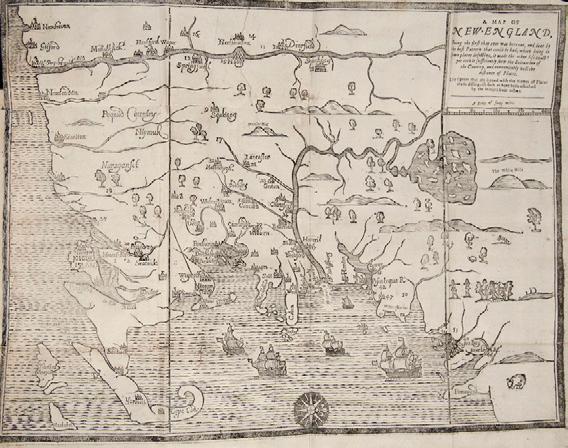
portion of this network to develop a focus group of educators that would field-test the research survey instrument. Teachers took early iterations of the survey and later provided direct feedback to fine-tune the questionnaire based on their personal experience in the classroom.
In a full circle way, the data collected from the national implementation of the survey will now shape how the Newberry thinks about its offerings for teachers—in many cases, the very same teachers who helped design the survey. “Nick’s study cuts through the larger political debate and engages with teachers on the ground. It provides details on what is being taught and how teachers feel about it,” Johnson explained. “This study allows us to better gauge what teachers are looking for and what kind of support they need. It directly informs what Teacher Programs will offer in the future.”
A key outcome of the project came in late September 2024, when the AHA team made its way to Washington, D.C. for a congressional briefing to guide future policymaking in support of more professional development for educators—a profession that is already strapped for time and resources. “Not every community has Newberry Teacher Programs at their disposal,” Kryczka said, suggesting that state and federal governments could do a better
job of funding ongoing professional development opportunities for educators, with an emphasis on refortifying their expertise in specific content areas.
“Teachers have a lot of great resources out there nowadays to help themselves and their students read like historians,” he elaborated. “But if you want your students to engage as historians, you need to involve teachers and students in true historic inquiry... Which is something the Newberry does really well.”
It remains to be seen how the AHA study’s findings will impact history curriculum and pedagogy in the long-term. But the Newberry is committed to being a place that takes seriously how the humanities are learned, taught, and practiced. “There’s a beautiful ongoing conversation between the Newberry and teacher education,” Laura McEnaney said. “But ultimately, it’s a question of how we can continue to better serve our teachers, locally and nationwide.”
Lili Pangborn is Communications Coordinator for the Newberry Library.
By Peter Regas
In the movies, life-changing events happen on mountaintops, looking at sunsets or at cafes, looking deep into your soulmate’s eyes. Several years ago, my life changed when I looked deeply into a Newberry microfilm screen. On February 13, 2010, I looked at the top of page sixty of the 1910 Trow
Business Directory of Manhattan and the Bronx , and my life has not been the same since. What up to then was a casual hobby looking into the origins of Chicago pizzerias turned at that moment into a fourteen-year mission to discover the origins of pizzerias in the United States.
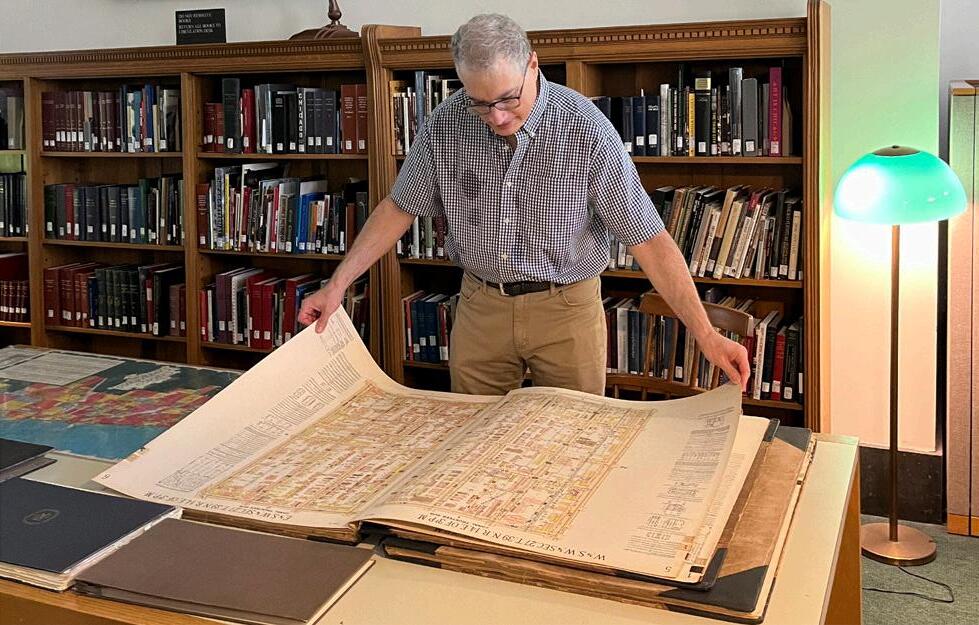

According to almost all previously published histories, Gennaro Lombardi opened the first registered pizzeria in the United States at 53½ Spring Street in New York City in 1905. In 2010, I set out to verify that Lombardi was indeed the owner by looking at city directories around the time the pizzeria was allegedly established. The Newberry Library has both general and business directories of New York City. Thinking I would quickly find Lombardi and move on, I started with the general alphabetical directories in 1905—no Lombardi. Perhaps the canvasser missed him that year. I checked another year and again, no Lombardi. Finally, I looked at the 1910 Business Directory —still no Lombardi.
Confused and a bit frustrated, I looked through every name under the directory’s Bakery, Grocery, or Restaurant sections to instead find the address 53½ Spring Street. After reviewing a few pages of the Bakery section, I found the owner of the business at the address. But the name was not Gennaro Lombardi. It was a name new to me: Francesco D’Errico. Instantly, I knew this meant that the Lombardi story, as it was previously told, was almost certainly false. And if that is so, then the entire history of the origin of pizzerias in the United States is now suddenly up for grabs.
The one primary source that seemingly supported Lombardi’s ownership in 1905 was an image of Lombardi at the pizzeria. To determine if the photo was indeed taken in 1905, we need to look for clues. If we look at the advertising poster in the window showing the number “14,” we see that the date below that number is “Wed 25 Nov.” November 25 only falls on a Wednesday in specific years, of course. Since Lombardi’s birth record shows he was born in Naples in 1887, the only possible years in which the photo could have been taken are 1903, 1908, and 1914. Because Lombardi’s ship manifest shows him arriving at the port of New York for the first time on November 23, 1904, we can exclude 1903.
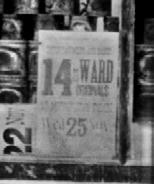
But what about 1914? We need help from the New York City Municipal Archives to resolve that question. After repeatedly asking about the availability of the building alterations blueprints for 53 Spring Street, I finally tracked down the critical July 1912

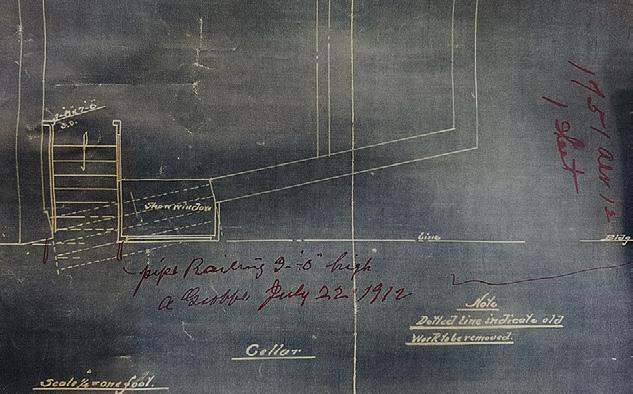

alterations that eliminated the sidewalk encumbrance by redesigning the stairs to the front door. Because the Lombardi photo shows the staircases before the alterations, the blueprint decisively proves the Lombardi photo was taken before July 1912. Thus, the only year consistent with all the evidence shows the Lombardi photo was almost certainly taken in 1908—a full three years after the pizzeria was established.
Since the popular Lombardi story was wrong on such a crucial detail, I re-examined the entire business history by looking at an enormous amount of primary source evidence including every Manhattan city directory from 1890 to 1933, telephone directories, Dun and Bradstreet credit rating books, census records, vital records, baptismal records, naturalization records, early Italian-American newspaper ads and articles, ship manifests, court testimony, property records, building alteration records, and newspaper articles from the 1930s and 1950s.

Perhaps most devastating for the original Lombardi story, I discovered an ad for the pizzeria at 53½ Spring Street in an August 1904 Italian-American newspaper showing Giovanni Santillo as the pizzeria’s proprietor. At that time, Gennaro Lombardi was still living in Italy. Primary sources do show Lombardi briefly owned the pizzeria in 1908, then sold it to a relative by marriage, Francesco D’Errico, who sold the pizzeria back to Lombardi by 1918. Lombardi then owned the pizzeria until he died in 1958. Lombardi may have worked at the pizzeria in 1905 but didn’t own it before 1908.
The pizzeria was almost certainly established in 1898 by a much older Italian baker named Filippo Milone, who was known in the United States as a pizza baker. For a history of pizzerias, I’m primarily interested in bakers who identified as pizza bakers with pizza as their main product, as opposed to bread bakers who sold pizza as a secondary product.
Aside from a few notable early Italian-American business directories, there were no Pizzeria sections in city directories. Pizza bakers were typically combined with bread bakers in the city directory’s Bakers section. While knowing the bakery’s business name would be extremely helpful, directories typically only gave the proprietor’s name and address. Therefore, I needed to look at each baker’s entire baking career to assess if they were a pizza baker. Perhaps no pizza baker better illustrates this issue than Filippo Milone.
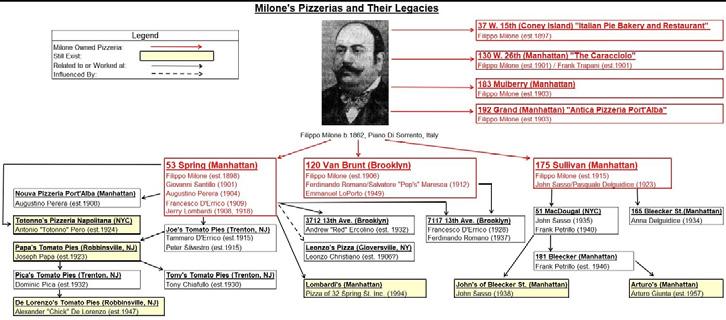
Early in 2010, I discovered Filippo Milone owned the property at 53 Spring Street in 1900. However, his occupation in the 1905 New York census was recorded as “Pastry,” meaning he was likely not a pizza baker. Several months later, however, when I looked at Milone’s entire career, I realized I had almost overlooked the most important early pizza baker in the United States. The 1920 census showed Milone owning a bakery while residing at 175 Sullivan Street. Previous pizza histories point to an early pizzeria at 175 Sullivan Street in 1929. What are the odds that Milone owned two bakeries, one at 53 Spring and the other at 175 Sullivan, and he had no role in establishing the pizzerias later known to be at these addresses?
In early 2011, Filippo Milone became the central focus of my research. Milone would eventually die in Brooklyn in 1924 without children to tell his story, so I was especially dependent on archival sources to detail his career. Italian records show he was born in Piano di Sorrento in 1862. Married in 1882 in the nearby town of Meta, Milone eventually emigrated to the United States in 1892 according to the 1900 census.
The earliest known business record of Milone in the United States shows him using his horse and carriage as collateral to get a $90 loan right before he’s listed in the 1894 city directory as the owner of an “eating-house” at 421 East 112th Street in Manhattan. Building alteration records at the New York City Municipal Archives show that in the summer of 1898, a bake oven was installed at 53 Spring Street, right before Milone likely took over the space.
I hit the jackpot in the summer of 2011 at the New York Public Library when I discovered a 1903 Italian-American newspaper ad with his photo advertising another Milone pizzeria at 192 Grand Street. Much later, in 2019, while researching old property records in Queens, I found an 1897 lease for what the agreement called Milone’s “Italian Pie Bakery and Restaurant” in Coney Island. This last discovery was particularly significant because
it established Milone as a pizza baker before he owned the store at 53 Spring Street. It is also the earliest known record of a Brooklyn pizzeria.
Given that Milone owned pizzerias shortly before and after he owned 53 Spring Street, and that store was confirmed to be a pizzeria shortly after he left, there is little doubt that he established the famous pizzeria we now know as Lombardi’s. The research continues, and to date, I have discovered that Filippo Milone established an unprecedented seven pizzerias in New York City.
My research currently shows there were at least six pizzerias in the United States known to have operated in the 1890s: three in Manhattan, two in Brooklyn, and one in Boston. While Filippo Milone owned two of these pizzerias, there is not enough evidence to say he owned the first pizzeria in the United States.
In January 2012, I discovered the earliest known pizzeria was operating in the spring of 1894 at 59½ Mulberry Street in Manhattan. The pizzeria’s proprietor, Giovanni Albano, previously owned a pizzeria in Naples, Italy, before he emigrated in 1891 to the United States. Manhattan city directories in 1893 show Albano purchased the bakery that year. But when did 59½ Mulberry become a pizzeria? Do we say 1894 because I found an 1894 city directory calling it a pizzeria? Or do we say 1891 because Nicola Pascale first appears as the bakery’s owner and Pascale goes on to own a pizzeria at 85 Mulberry by at least 1897? Given the “almost certain” standard I established for Milone and 53 Spring Street, I assert that the first known U.S. pizzeria was established by Giovanni Albano at 59½ Mulberry in 1893.
I initially visited the Newberry on a hunt for the origins of pizzerias in Chicago. So what of the Windy City? Digitization of Chicago’s newspapers in the last two decades has led to the rediscovery of Granato’s Pizzeria Napoletana. Before eminent domain forced it to close in 1963 and it became part of what is now the University of Illinois Chicago campus, Gaetano “Tom” Granato established the pizzeria at 907 West Taylor in 1924. At


the time it was called Chicago’s earliest pizzeria. I used to call it that, too. But in 2021, I discovered a much earlier pizzeria established in 1906 by a pizza maker from Sarno, Italy, named Alfonso Iannone (sometimes spelled Jannone). Iannone arrived in the United States in 1900, initially lived in Brooklyn, and then moved to Yonkers, New York. By the summer of 1906, he owned the Pizzaria Napolitana near the southwest corner of West Polk and South Des Plaines. He looks to have moved his pizzeria several times before finally leaving Chicago around 1914 and returning to Italy.
My deep dive into the history of pizzerias in the United States shows just how genealogical records can be used for more than filling out a family tree. My sincere thanks to the Newberry’s own Matt Rutherford and Grace Dumelle. I could not have solved the pizzeria mystery without them.
Peter Regas is an independent researcher and longtime reader at the Newberry.
Nearly 1,200 people visited the Newberry for our inaugural NewberryFest on Saturday, July 20. Newberry staff and volunteers welcomed visitors into the building for this day-long event with the goal of introducing the Newberry to newcomers and showcasing the many opportunities for engagement at the library.
NewberryFest attracted many visitors who had never been to the Newberry and are now excited to return. Other, more familiar faces remarked how wonderful it was to see so many people engage meaningfully with the library. Guests had the opportunity to come face-to-face with items from our collection, speak to curators and librarians, and learn about our work through talks on topics such as Newberry 101, Indigenous Chicago, and Genealogy 101. Exhibitions A Night at Mister Kelly’s and Chicago Style: Mike Royko and Windy City Journalism saw a steady stream of visitors. In addition, visitors could take building tours, shop our used book sale, enjoy a discount at the Newberry Bookshop, and visit with staff from across the organization.
“The building was abuzz at NewberryFest with people who were excited to learn about the Newberry. Staff and volunteers were eager to engage the public and share their excitement about the library. The event was a great success, and we are already making plans to build on that momentum,” says Vince Firpo, Vice President for Public Engagement.




At the beginning of August, the Newberry had the exciting opportunity to host two Rare Book School (RBS) courses, a first for the library. Based at the University of Virginia since 1992, RBS is an independent institute that supports the study of the history of books and printing and related subjects. “Any given year, RBS offers around forty different intensive one-week courses related to the history of the book, with topics ranging from how books are made, who reads them, how they are printed and published, all of those kinds of issues that go into understanding the physical objects of the book as well as the cultural context in which they exist,” says Will Hansen, the Newberry’s Roger and Julie Baskes Vice President for Collections and Library Services and Curator of Americana, and one of the Newberry’s Rare Book School lecturers.
Originally, the primary audience of RBS was rare book librarians who were looking for training that they couldn’t get in library schools or in traditional graduate programs. Jill Gage, Custodian of the John M. Wing Foundation on the History of Printing and Bibliographer of British Literature and History and the Newberry’s second Rare Book School lecturer, adds, “It’s expanded quite a bit. They do a lot of work with graduate students and new faculty, and they offer a lot of scholarships and fellowship programs around graduate students now as well.”
Former Newberry Baskes Vice President for Collections and Library Services Alice Schreyer played a significant role in connecting Rare Book School with the library. Alice served on the RBS board for many years and is a longtime friend of RBS Executive Director Michael
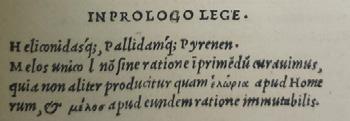
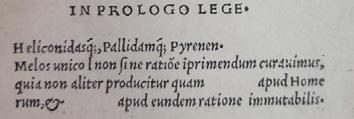
Suarez. Alice had long been interested in the Newberry hosting or being involved with Rare Book School courses. Hansen says, “This was the year where it all coalesced. The two courses that we hosted focused on typography and Indigenous Studies and were the two that seemed most logical to start with for the Newberry.”
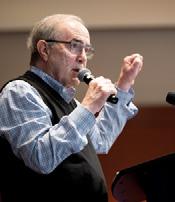

The Newberry kicked off its fall programming season on September 14 with Chicago Storytelling, an annual event featuring a diverse range of storytellers sharing their unique perspectives. The event was emceed by journalist Rick Kogan and featured stories from Aaron Golding (Seneca), Showtime Shanna, Jim Harvey, and Annie Howard. A performance by The Joel Hall Dancers highlighted the Black experience through dance, and a collection presentation featured an array of Chicagofocused items from the Newberry’s holdings.

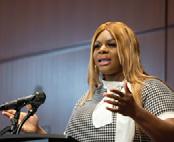


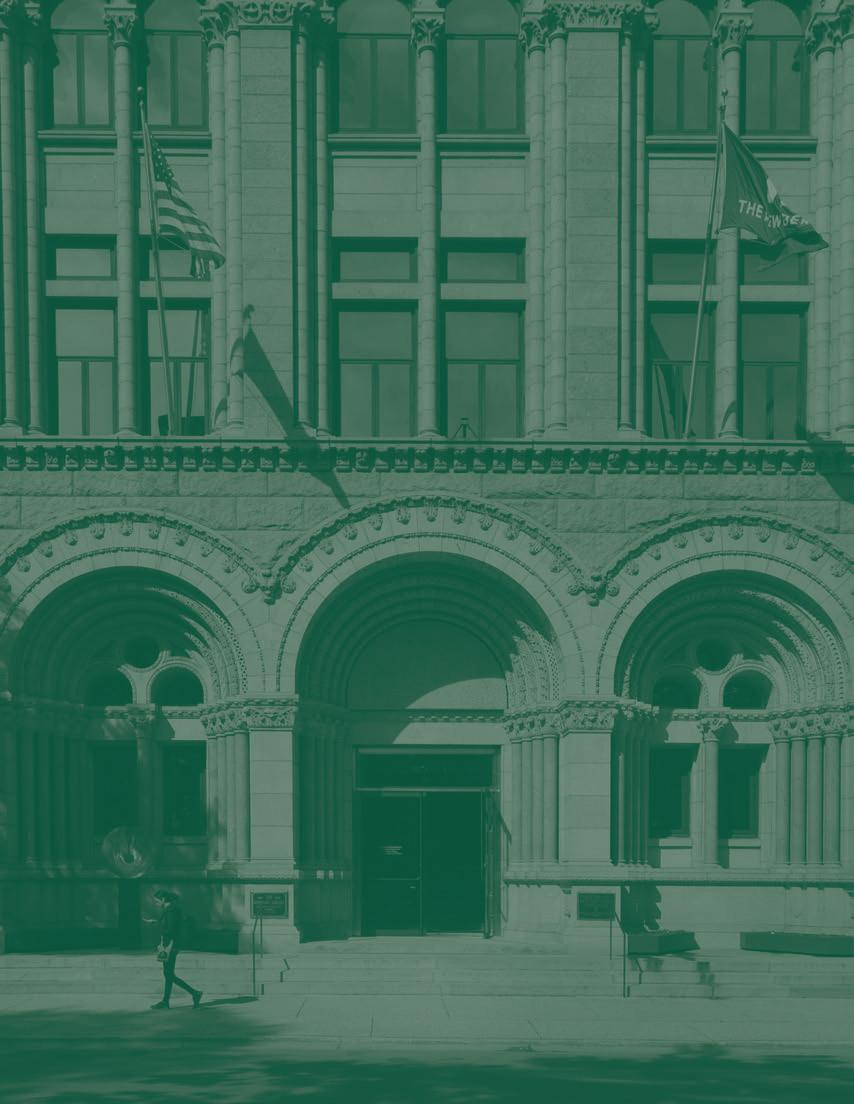
2023–24

Dear Newberry Friends and Supporters,
The Newberry is open to all, free of charge, as we have been for 137 years. We are committed to growing and diversifying our audiences, connecting even more users with our collections, staff, programs, and exhibitions. During the 2024 fiscal year, we made great strides in raising awareness and growing audiences. Thousands of first-time program attendees attended a talk or performance at the Newberry or online, new reader registrations hit a high not seen since 2009, and more than 30,000 people visited the Newberry to enjoy our free exhibitions. We are proud to look back on another successful year at the Newberry, one marked by excitement and engagement.
Let us tell you about one week in March that beautifully illustrates the power and the draw of the Newberry Library across its different audiences. The Renaissance Society of America (RSA) held its annual academic conference in Chicago (21-23 March), and the Newberry was a destination for scholars from across the globe. In one week alone, we registered 142 new readers from twelve different countries. That week, staff brought nearly 1,100 items to readers. RSA participants held meetings at the Newberry and participated in collection presentations. During a particularly lively afternoon, Renaissance dancers demonstrated their craft in full costume.

During this flurry of activity in the reading rooms, the Newberry also opened a blockbuster exhibition—A Night at Mister Kelly’s. In its first week, the show drew more than 1,500 visitors to the library. It also drew significant attention from local media, with prominent features in the Chicago Sun-Times, Block Club Chicago, and the Chicago Tribune. Radio and television outlets also ran with the story; Newberry staff were featured on WGN, ABC, NBC, WTTW, WBBM, and WBEZ.
On March 21—the day A Night at Mister Kelly’s opened to the public—we hosted poet, essayist, and cultural critic Hanif Abdurraqib as part of the popular Writers on Writing series. Chicago poet Eve L. Ewing joined Abdurraqib in conversation, and the program drew more than 220 people to the Newberry—a number that could easily have been much higher but for our space limitations. Several hundred people simultaneously viewed the program via livestream. The excitement in the building was palpable. Guests stayed well after the program to speak with Abdurraqib and get advance copies of his book signed.
That all this activity occurred over the course of just a few days demonstrates the vibrancy of the Newberry across its various departments. Members of the public are finding a home at the library in a variety of different ways—whether in our reading rooms, our event spaces, online, or in our exhibition galleries. And as they join the Newberry’s welcoming community, new friends also begin to understand the importance of the humanities and the positive impact they have on our daily lives.
The humanities offer an avenue not only to understand the present and the past but also to influence the future. How did we get here? How have human beings across time made sense of the changes facing society? How do we move forward from here? The Newberry’s collections are uniquely positioned to help answer these questions and many more. For example, visitors to our Seeing Race Before Race exhibition were invited to understand how our current concept of race has roots in the early modern period. Our professional development programs for teachers equip them to address complicated issues like segregation, Indigenous history, or media literacy in their classrooms. Undergraduate students in our programs learn how to seek their own answers straight from the primary sources in our collections.
Another important feature of the humanities is the joy that they bring. The humanities are central resources when we need to catch our breath, recharge our batteries, and remind ourselves of imaginative and creative experiences outside the stresses of our daily lives. In this sense, the humanities are tremendously valuable. Reading a book by your favorite author, exploring your family tree, learning something new about the history of your neighborhood, engaging in discussion with friends and family around contemporary issues—all of these are examples of how we engage with the humanities in our daily lives. The Newberry, today as 137 years ago, remains a central resource for such activities. This last year, we invited guests to remember musical and comedy legends through the A Night at Mister Kelly’s exhibition and its related programming. Visitors also enjoyed free public programs about polar exploration, a short film about Alessandro de’ Medici, and a celebration of Mexican heritage, food, and art.
In the following pages you will read more about the impressive work by Newberry staff. Their accomplishments are many and speak to their dedication to our mission and our users. This work is made possible through the generosity and support of our growing community of donors. Thank you for being partners in our work and helping us connect ever more people with the Newberry.
Sincerely,

Robert A. Holland, Chair, Board of Trustees

Astrida Orle Tantillo, President and Librarian
The Newberry continues to engage the public through thought-provoking free exhibitions; compelling programs that feature popular writers, historians, performers, and artists; and classes that allow participants to take a deep dive into topics as varied as music of the Ottoman court, John F. Kennedy’s visit to Berlin, the various forms of poetry, and movie monsters.
Visitors enjoyed four exhibitions in 2023-24 that were free to anyone who walked through our doors and brilliantly showcased the breadth and relevance of Newberry collections. Seeing Race Before Race drew on the pathbreaking work of partners in the research collective RaceB4Race to examine when, where, and why conceptions of race came into being. A Night at Mister Kelly’s invited visitors to relive a night out on the town in the mid-twentieth century at one of Chicago’s most famed and beloved nightclubs. Indigenous Portraits Unbound took a close look at History of the Indian Tribes of North America , one of the most imposing, influential, and expensive books published in the United States before the Civil War. And visitors were treated to the surprising variety of collection items that can be discovered at the Newberry through a simple search in our catalog with Wheels.
The Newberry’s long tradition of offering relevant, engaging, and entertaining programs and classes continued in 2023-24. Adult Education staff recruited more than a dozen new instructors to help diversify our class offerings. Exciting new classes included “Gothic Chicago: Chicago’s Gothic Architecture and Haunted Histories,” “Literary Diversity of Southern India: Novels in Translation,” and “Pequeñas obras maestras de la literatura en español” (Little Masterpieces of Spanish Literature), which was taught in Spanish.
Our free programs attracted more than 8,000 attendees, nearly half of whom self-identified as first-time participants. Notable programs included an extraordinary Meet the Author event with maritime archaeologist Mensun Bound, who in 2022 led an expedition that discovered Ernest Shackleton’s ship Endurance ; a DIY Valentines event led by an array of artists from the Chicago
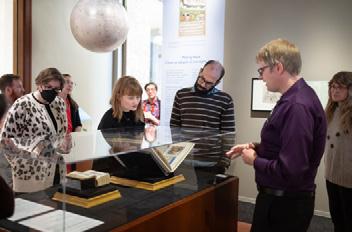


Calligraphy Collective; and a night of jazz and storytelling at Winter’s Jazz Club. The first full year of our new Writers on Writing series, curated in collaboration with author Rebecca Makkai of StoryStudio Chicago, featured award-winning writers Lauren Groff, Hanif Abdurraqib, Eve L. Ewing, Jericho Brown, and Robyn Schiff.
All this activity attracted significant media attention. From the Chicago Tribune and Block Club Chicago to WBEZ and WGN-TV, local media shared stories about Newberry exhibitions, programs, collections, and announcements, such as the appointment of Astrida Orle Tantillo as President and Librarian. We were proud to host Roz Varon of ABC 7 for her final “Weekender” report before her retirement after thirty-five years on the air. And we were delighted to showcase A Night at Mister Kelly’s on WGN’s “Around Town” segment with Ana Belaval.
There is something for everyone at the Newberry, and that was clearer than ever in 2023-24. Our building was buzzing with excitement and energy. We look forward to more of the same in the months ahead!




86,900 people followed the Newberry across all social media channels.
1,331 learners participated in 92 Adult Education classes.
8,931 people attended 37 free programs (18 in-person, and 19 hybrid).
47% of program registrants self-identified as first-time attendees.
30,860 visitors explored our free exhibitions.
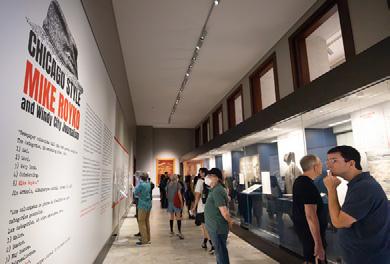
The Newberry is a destination for, and indeed an intellectual home to, undergraduate students, high school teachers, research fellows, academic consortium members, and scholars-in-residence. Our division of Research and Education, which houses our three research centers, serves a diverse population of academics and scholars by offering both the dependable and the experimental.
In 2023-24, our cohort of ten long-term fellows and 35 short-term fellows arrived at the Newberry from a healthy range of humanities disciplines, including history, art history, classics, musicology, and political science. They committed themselves to both their independent research in our collections and to building an intellectual community. We invited Tim Mennel, Executive Editor at the University of Chicago Press, to talk with our fellows about academic publishing in the current marketplace. And given the import of having humanities scholars share their research and engage with multiple publics, we invited staff from our Public Engagement division to offer their expertise on how to give engaging public talks.
We strive to engage scholars of all ages. The 2023-24 Newberry Library Undergraduate Seminar, “Medicines, Poisons, and Landscapes of Care in the Early Americas,” was taught by Kat Lecky and Josefrayn Sanchez Perry of Loyola University Chicago. Students from DePaul University, Loyola, University of Illinois Chicago, and Roosevelt University spent a semester in our collections, guided by the two Loyola professors and our Collections and Library Services staff.
The Newberry is proud to offer professional development programs for teachers. In 2023-24, we held 26 Newberry Teachers

Consortium seminars, which engaged more than 400 teachers. Our partnership with Loyola Academy provided the rare opportunity to participate in multiple visits to the same class, Honors Native American Literature, where we advised on best practices for researching Native American and Indigenous topics and provided research support for individual capstone projects.
Our three research centers engaged scholars around three of the Newberry’s collection strengths—American Indian and Indigenous Studies; Maps, Travel, and Exploration; and Medieval, Renaissance, and Early Modern Studies. The D’Arcy McNickle Center for American Indian and Indigenous Studies continued work on the “Increasing Access to Indigenous Collections” initiative, which was funded by a three-year planning grant from the Mellon Foundation in 2020. The Center for Renaissance Studies curated the popular Seeing Race Before Race exhibition while continuing to offer workshops, symposia, and conferences for scholars. The Hermon Dunlap Smith Center for the History of Cartography launched the First Book Seminar, inviting three international scholars writing their first books and three senior scholars as respondents to immerse themselves in the Newberry collections.
Our collections come to life through the curiosity and work of our scholars, students, and teachers. We are excited to see undergraduates uncover the wonder of the archive and join in the thrill of fellows finding new connections through the exploration of the collections and their conversations with one another. There’s always something new to discover at the Newberry!


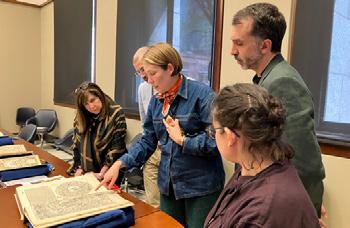
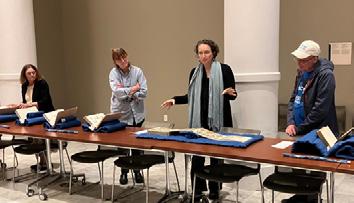
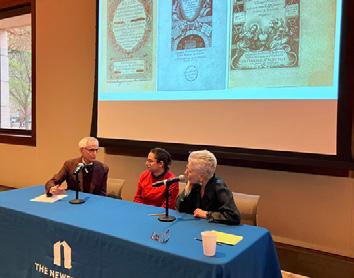
45 fellows (10 long-term and 35 short-term) advanced their research through our collections.
590 teachers participated in a professional development programs at the Newberry.
79,000 unique users visited our Digital Collections for the Classroom website 118,000 times.
64 graduate students attended programs through the Newberry Consortium in American Indian and Indigenous Studies.
483 people attended symposia and conferences held by the Center for Renaissance Studies.

At the Newberry, everything starts with the collection. Housed in our climate-controlled Stacks Building, the collection is a direct link to the people and events that have shaped today’s world. It is accessible with a free reader’s card and is cared for, cultivated, and shared by a dedicated team of librarians, curators, catalogers, and conservators.
During 2023-24, curators and selectors continued to add materials that diversify the research possibilities in our collections and amplify voices that have often been silenced or diminished in the historical record. Many of our most exciting acquisitions this year were the result of curatorial collaboration, a hallmark of the Newberry approach to collection development. Exciting new acquisitions include the papers of Regina Harris Baiocchi, a Black Chicago composer and poet; papers related to the Klamath, Assiniboine, Ponca, White Earth Chippewa, and Bad River Chippewa tribal nations; and a book of love poetry from 1638 by Margherita Costa, a superbly prolific writer, playwright, and singer, who entertained at Italian, French, and German courts.

Care for the collection is paramount. Our conservators treated more than 1,500 items to ensure they can be safely used in our reading rooms or displayed for exhibition. They also addressed storage and housing needs for collection items. Conservation staff and volunteers designed improved storage for over 300 rolled maps and 115 parchment manuscript fragments.
Our reading rooms continue to attract researchers, both professional and amateur. More than 5,000 people registered as readers in 2023-24. This marked an increase of 20% over the year before and was our largest total since 2009. Nearly 13,000 items were paged to the reading rooms throughout the course of the year. In addition, Reader Services staff worked to engage visitors through more than 200 collection presentations and other outreach activities.
Of course, not everyone who uses the collection visits the Newberry. Digitization of the collection is an increasingly important aspect of our work and allows us to reach audiences far beyond Chicago. Visitors from all fifty states and 156 countries accessed our digital publications and resources, viewing or downloading nearly 1.5 million items.
Our collection is your collection. Even as it grows, it remains a steady source of inspiration and wonder. Our work to care for it and make it accessible lies at the heart of our mission and we are heartened to see new readers discover it every day.
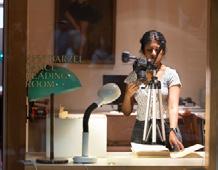






5,048 individuals registered as Newberry readers.
3,300 unique readers made 12,304 visits to the reading rooms.
677 titles were added to the collection.
124 Modern Manuscript collections (573.3 linear feet) were accessioned.
4,217 titles (6,166 volumes) were cataloged, making them accessible to researchers.
1,544 items were treated by conservators.
118,695 digital files were created from Newberry collection items.
3,423 participants attended 235 Instruction and Outreach activities, of which 171 were collection presentations for 2,429 attendees.
All of the work described in these pages is made possible through the generosity of the Newberry’s community of donors. As an institution that is free and open to the public, we rely on our dedicated supporters to keep our doors open and our services available to all.
In 2023-24, more than 1,800 donors made contributions large and small to the Newberry. The Annual Fund raised more than $2 million, providing the crucial general operating support that underpins all we do. Bequests added another $1.3 million, continuing the strong legacy begun by Walter Newberry’s own bequest, which founded the library in 1887. We secured nearly $500,000 in support of our exhibitions program, allowing the Newberry to mount free exhibitions that attract tens-ofthousands of visitors to the library each year. And we continue to raise funds to digitize and make freely available online even more of our collections; this year, a six-figure grant from the National Endowment for the Humanities will enable us to begin digitizing an extraordinary collection of materials written in more than 300 Indigenous languages of the Americas.
More than 900 supporters attended special events at the library last year. The 2024 Newberry Library Award Celebration, which honored historian Drew Gilpin Faust, raised significant funds for the library. Forbidden Newberry, a Halloween-themed look at the spookier side of our collection, welcomed nearly 100 younger donors last fall, and our Next Chapter group for young professionals continued to grow its ranks.
Our dedicated corps of volunteers continued to inspire as well, with nearly 200 volunteers contributing their time to the library. Volunteers help us welcome and orient our visitors, greet guests, give tours of the building and exhibitions, help in the Bookshop, and assist at public programs and special events. Without their efforts, we would not be able to create such a welcoming and engaging environment at the library.
We are grateful to all who support the Newberry with their time and with their financial contributions. Thank you for ensuring that the Newberry’s collection, programs, and services will remain free to all who need them for years to come.


433 first-time donors supported the Annual Fund. Giving to the Annual Fund increased 9.7%.
2,886 visitors attended a tour led by a volunteer docent.
194 people volunteered their time as greeters, book sorters, tour docents, and more.
921 donors and guests attended special events at the Newberry.

Summary of Financial Position
For the year ended June 30, 2024, and for the year ended June 30, 2023 (000s omitted).
Summary of Activities

For the year ended June 30, 2024, and for the year ended June 30, 2023 (000s omitted). Expenditures
The following donors generously made gifts to the Annual Fund and are recognized as members of the President’s Fellows or Newberry Associates.
PRESIDENT’S CABINET
($25,000 AND ABOVE)
Roger and Julie Baskes
Chicago Department of Cultural Affairs a nd Special Events
Jan and Frank* Cicero
The Crown Family
Alice and Richard Godfrey
Victoria J. Herget and Robert K. Parsons
Celia and David Hilliard
Robert A. Holland
Dr. Elizabeth Amy Liebman
The John D. and Catherine T. MacArthur Foundation
Cindy and Stephen Mitchell
Dr. Gail Kern Paster
The Pattis Family Foundation
Christine and Michael Pope
Roy and Irene Rettinger Foundation
Sheli Z. Rosenberg and Burton X. Rosenberg
Mr. Rudy L. Ruggles, Jr.
Karla Scherer
Mr. David B. Smith, Jr. and M s. Ilene T. Weinreich
Nancy and Richard Spain
Ms. Carol Warshawsky
PRESIDENT’S CIRCLE
($10,000 - $24,999)
Edith Rasmussen Ahern and Patrick Ahern
Mr. Gregory L. Barton
Ann Bates Kittle
Joan and William Brodsky
Buchanan Family Foundation
Lewis Collens and Nancy Sindelar
Robert and Joan Feitler
Celine Fitzgerald
Julius N. Frankel Foundation
Carla Funk
Louise R. Glasser
Dr. Hanna H. Gray
The Gray Family Fund at The Chicago C ommunity Foundation
John R. Halligan Charitable Fund
Illinois Department of Commerce & E conomic Opportunity
ITW
Kirkland & Ellis LLP
Professor Lawrence Lipking and Ba rbara Myers
Barry MacLean
Andrew and Jeanine McNally
Ms. Susan Nagarkatti
Ken* and Jossy Nebenzahl
Janis W. and John K. Notz, Jr.
Abby McCormick O’Neil and D aniel Carroll Joynes
Jean E. Perkins and Leland E. Hutchinson
Mr. Jeffrey Rappin
Mr. John P. Rompon and Ms. Marian E. Casey
Mrs. David Savner
Adele Simmons
Mr. and Mrs. Richard D. Siragusa
Mrs. Anne D. Slade and Mr. Douglas Slade
Liz Stiffel
Laura and Jeff Torosian
Yellow-crowned Foundation
Anonymous (2)
PRESIDENT’S SENIOR FELLOWS ($5,000 - $9,999)
Thomas Berg
Charles H. and Bertha L. Boothroyd Foundation
Mr. T. Kimball Brooker
Nancy Raymond Corral
Dr. and Mrs. Tapas K. Das Gupta
Dr. William E. Engel

Professors Stephen and Verna Foster
Mr. and Mrs. Christopher B. Galvin
Ted Haffner
Mark and Meg Hausberg
Mr. and Mrs. Michael Keiser Donor Advised Fund
Laura Baskes Litwin and Stuart Litwin
Ms. Laurin Mack and Mr. William Snyder
David E. McNeel
Professor Jean M. O’Brien
Mrs. Mary Louise O’Flaherty
Adrian and Essi Randolph
Martha T. Roth and Bryon Rosner
Mr. Brian Silbernagel and Ms. Teresa Snider
Carl W. Stern and Holly Hayes
Astrida and Steve Tantillo
Marilyn Winter
Anonymous (1)
PRESIDENT’S SUSTAINING FELLOWS ($2,500 - $4,999)
Dr. Ellen T. Baird
Robert Beasecker and Erika King
Catharine Bell and Robert Weiglein
Dr. William H. Cannon, Jr. and M r. David Narwich
Bill and Holly Charles
John and Michele Donley
Janet and Arthur Holzheimer
Robert D. Karpinski, PhD and Gregory S. Weiland
Lou K. Levine
Ms. Helen Marlborough and M r. Harry J. Roper
Mr. Michael Payette
Maridee Quanbeck
Dr. Diana Robin
Susan Schwartz
Dr. Christine M. Sperling
Ms. Elizabeth Teich
Randa Touquan
Dr. Thomas E. Veeser
Mr. and Mrs. Robert Wedgeworth, Jr.
Thomas K. Yoder
Anonymous (2)
PRESIDENT’S SUPPORTING FELLOWS ($1,500 - $2,499)
Mr. and Mrs. Warren L. Batts
Charles Cullen and Melanie Leonard
Mrs. Ariane Dannasch
Ms. Andrea Dudek
Eldred-Harland Charitable Fund at The Chicago Community Foundation
Dr. Marilyn Ezri
Ms. Lynne Fisher
Dr. Michael P. Fitzsimmons
The Franklin Philanthropic Foundation
Mr. Paul C. Gearen
Mr. Martin A. M. Gneuhs
Daniel Greene and Lisa Meyerowitz
Dr. Christopher J. Hagenah
Hjordis Halvorson and John Halvorson
William Hansen and Jaime Danehey
Neil Harris and Teri J. Edelstein
Elaine and Roger Haydock
The Heestand Foundation
Ms. Kay D. Hinn
Edward C. Hirschland
Jay Jaffe
Mrs. Patricia Jahn
Ivan and Kathy Kane
Professor and Mrs. Stanley N. Katz
Lisa Kohn
Kovler Family Foundation
Professor and Mrs. Donald W. Krummel
David and Suzette Macey
Janet McEnaney
Mr. Craig Niemann
Dr. Dorothy Noyes and M r. Michael Krippendorf
Lynne Ostfeld
The Charles W. Palmer Family Foundation
Joe and Jo Ann Paszczyk
Ben and Nancy Randall
Mr. Charles R. Rizzo
Ms. Penelope Rosemont and M r. Paul R. Sievert
Sahara Enterprises, Inc. Fund at The Chicago Community Foundation
Ms. Alice Schreyer
Stephen A. and Marilyn Scott
Professor Eric Slauter
Ms. Barbara Smith
Mr. Gerald R. Southern
Ms. Sharon Walton
Nora L. Zorich and Thomas W. Filardo
Anonymous (3)
($1,000 - $1,499)
Mr. Jim R. Akerman and M s. Luann Hamilton
Ben Axelrad and Christy Bloom
Joan and John Blew
Mr. and Mrs. Andrew Block
The Robert Thomas Bobins Foundation
Sheila Bosron and William Bosron
Mr. and Mrs. Dean L. Buntrock
Marcy and Greg Carlin
Rob Carlson and Paul Gehl
The Chicago Literary Club
Kimberly A. Douglass
Nancie and Bruce Dunn
Mr. Henry Eggers
Mr. Michael L. Ellingsworth
Ginny and Peter Foreman
Ms. Eloise C. Foster
Arthur Frank
Fuller and Moskovits Family
Ms. Leigh Gates
Professor Timothy J. Gilfoyle and M s. Mary Rose Alexander

Alan and Carol Greene
Christine Grosch
Phillip and Debby Halpern
Marjorie and John Harper
Clark and Carolyn Hulse
Mr. D. Bradford Hunt
Jane and Don Hunt
Mr. and Mrs. John P. Keller
Jonathan and Nancy Lee Kemper
Dr. Robert S. Kiely
The Lawlor Foundation
Mr. Arthur M. Martin
Mrs. Sherry McAllister
Ms. Laura McEnaney
Christopher McKee
Dr. Julie Morita
Professor Jessie Ann Owens
Sara Paretsky
Mr. Alan Petrov
Mr. Don Phillips and Ms. Anne Phillips
Janet Reece
Allan and Lynne Reich
Julie Alexander Ripley
Dr. James Engel Rocks
Michael and Jill Rosenbaum
Mr. and Mrs. Eric Schaal
Ilene and Michael Shaw Charitable Trust
Mr. and Mrs. Thomas C. Sheffield, Jr.
Larry Silver and Elizabeth Silver-Schack
Lynne Simon
Ms. Karen Sonderby
Carolyn and David Spadafora
Mr. Lawrence E. Strickling and D r. Sydney L. Hans
Dr. Michele M. Thompson
Mr. Peter Vale
Michael and Marilyn Vender
Robert Williams
Ms. Augustine S. Wu
Mr. Robert J. Zarse
Anonymous (4)
HUMANISTS ($500 - $999)
Tony and Nancy Amodeo
Dr. Donna M. Avery and D r. James Andrews
Mr. Christopher Barer
Bob and Trish Barr
Ms. Julie A. Bauer
Mrs. Deborah H. Baughman
Paul Berkowitz
Dr. Heather E. Blair
Ms. Catherine S. Bosher
Mr. and Mrs. Anthony Bowe
Dr. Jay Brigham
David and Janna Caldarelli
Mrs. Jean Carey
Dennis Carlin
LaVerne and Waitung Chan
Mr. Donald R. Chauncey
Dr. D. Stephen Cloyd
Leigh and Doug Conant
Ronald Corthell and Laura Bartolo
Louise Costello
Mr. Roger M. Dahl
Magdalene and Gerald Danzer
Ms. Angela J. D’Aversa
Ms. Nancy Dehmlow
Mr. Gordon R. DenBoer
Mr. Cem Diniz
Mr. Andrew K. Dolan
Ms. Catherine J. Dolton
Tessa Dratt
Eliza and Timothy Earle
David and Susan Eblen
Anne Egger
George and Sherry Eichelberger
Dr. Richard H. Ekman and M rs. Caroline Ekman
Ms. Sharon Feigon and Mr. Steven Bialer
Ms. Virginia Fitzgerald
Mrs. William Flory
Professor Lisa A. Freeman and M s. Heather Schmucker
Ray Frick
Dr. Muriel S. Friedman*
Miss Nancy J. Geitgey
Virginia and Gary Gerst
Mrs. Ruthie N. Gessinger and M r. Paul Richard Gessinger
Donald and Jane Gralen
Richard Grant
Ms. Margarete K. Gross
Ms. Lee R. Hamilton
Mr. Arthur R. Hansen
Kathleen and Charles Harper
Mr. and Mrs. Howard Hayes
Linda Heban
Professor Richard H. Helmholz and M rs. Marilyn P. Helmholz
Mr. Jason M. Heltzer
Mr. Allan G. Hins
Cheryl Iverson
Mr. and Mrs. Norman O. Jung
Dr. Suzanne Karr Schmidt and M r. Keith Schmidt
Mr. Wayne T. Kennedy and M s. Lorelei F. Rockwell
Robert Ketterer
Mr. Roger Keys
Mr. Bruce Kirkpatrick
Paul and Raye Koch
Craig Koslofsky and Dana Rabin
John and Barbara Kowalczyk
Dr. Nancy Krippel
Kathleen LaPorte
Ms. Michelle Mace
Dr. Ruth F. MacKay
Laura Matthew
Mr. and Mrs. Robert E. McCamant
Dr. Ailsie B. McEnteggart
Ms. Elizabeth W. McKenna
Barbara and Don McLucas
Patricia McMillen and Jack Nagy
Janis Mendelsohn
Professor Edward W. Muir, Jr.
Mr. John Newberry
Marjorie and Christopher Newman
Allen and Georga Parchem
Dr. Joseph A. Parisi
Mr. David Perry
Meredith Petrov
David Prindable
Mr. Charles F. Regan, Jr.
Alicia Reyes
James Reynolds
Mrs. Diane Rosenberg
Ed and Diana Ruthman
Barry Sears and Kathy Rice
Mrs. Carolyn M. Short
Debra Siegel
Alyce K. Sigler
Carl and Jane Smith
Mr. Steven F. Soltes M.D. and M rs. Anna Soltes
Ms. Margaret Stanley
Ms. Arlene Stransky and M r. George Stransky, Jr.
Maureen Talbot
Mr. Tod N. Tappert and Mr. John Gallagher
Mrs. Jan Tranen
Village Arts Associates
Jacqueline Vossler
Sharon Wang
Anne Warnke
Lisa Warshauer
Ms. Ann Wilson Green
Mrs. Iris S. Witkowsky
Mary Witt
Sherwin and Sheri Zuckerman
Ms. Karen Zupko
Anonymous (2)
LITERATI ($250 - $499)
Mr. and Mrs. Paul H. Adler
Mr. and Mrs. Paul F. Anderson
Appelquist Family Fund
Ms. Rosanne C. Arnold
Ms. Carolyn Arnolds
Mr. Frederic J. Artwick
William O. Autry and Sarah E. Leach
Mrs. Jennifer U. Baker
Kathlene Baldanza
Ms. Priscilla Barlow
Susan Bazargan
Susan and Gary Beckner
Mr. and Mrs. Francis Beidler
Pete Blatchford
Robert Blythe
Professor Daniel E. Bornstein
Dr. Kathleen A. Brosnan
Mr. Todd Brueshoff
Mrs. Elizabeth J. Buckley-Geer and M r. Stephen Geer
Pat and David Buisseret
Ms. Susan Burkhardt
Professor Sarah L. Burns
Professor Richard Candida Smith
Mary Anne Cappelleri
Douglas and Susan Carlson
Mr. and Mrs. Richard C. Carr
Mr. and Mrs. Walter S. Carr
Ms. Carla Carstens
Mr. Glenn Carter and Mrs. Barbara Carter
Caxton Club
Salvatore and Marifred Cilella
Ms. Michele Cloonan and Mr. Sidney Berger
Robert Cohn
Mr. and Mrs. Charles M. Colburn
Charles and Dianna Coleman
Professor Edward M. Cook, Jr. and M rs. Elizabeth P. Cook
Susan E. Cremin
John Cullinan and Ewa Radwanska
Dr. Arthur I. Cyr
John Danaher
Mr. John Darey
Mr. Martin Davis
Laura de Frise and Steven Rugo
Sally Dilgart
Patricia Dore Ph.D.
Mr. Philip Dougherty
Professor Michelle M. Dowd
Dr. and Mrs. James L. Downey
Mary Pat Doyle
Mr. Robert P. Doyle
The Driscoll Family
Ms. Carolyn Driver-McGee
Jon and Susanne Dutcher
Mr. George E. Engdahl
Mr. James R. Fancher
Kamila Farshchi
Phyllis and William Faulman
Dr. Sandra Fernbach
Aubrey Fisch
Mr. Douglas W. Fitzgerald and M s. Karen Clausius
Marcia Flick
The Fortnightly of Chicago
Mr. Brendan Fox
Mr. and Mrs. Paul Freehling
Kathryn Gibbons Johnson and Bruce Johnson
Ms. Marsha W. Ginsberg and M r. Gordon M. Sayre
Mr. James P. Goodridge and Ms. Joan R. Riley
Mr. and Mrs. Delmon B. Grapes
Marc and Sulie Grayson
Mr. Mark Greeley
Judith Greene
Thomas and Constance Guardi
Jane and Ray Hagstrom
E. A. Hamill Fund
Mr. Glenn Hamilton

Toni and Ken Harkness
William Hauslein
Arlene E. Hausman
Carla Hay
Mr. Michael L. Hermsen and M s. Elizabeth A. Patterson
Mr. and Mrs. Frederic W. Hickman
Mr. Brian E. Hill
Mr. Roger C. Hinman
Edward Hoffman
Ms. Suzanne L. Hoffman and M s. Rachael K. Smith
Ruth Holst
Mr. and Mrs. Paul J. Houdek
Dennis Hughes
Patricia Hulseman-Abrams
Mr. Craig T. Ingram
Denise Jacob
Ms. Emily Troxell Jaycox
Ms. Julia Johnas
Mr. Mark L. Johnson
Cynthia Joho
Sona Kalousdian and Ira Lawrence
Ms. Joanna Karatzas and Mr. Philip J. Enquist
Mr. Jeremy Kazan and Ms. Kendra Thulin
Anna Kealy
Anne M. Kern
Anne Kimball
Melvin Koenigs and Shirley Koenigs
Mary Sue Kranstover and Mark Davis
Linda Kristensen
Mr. Paul Kuhn
Diane and Charles Laff
Ms. Barbara Lanctot
Andrew and Susan Langan
John Lawrence
George Leonard and Susan Hanes-Leonard
Averill and Bernard Leviton
Michael Litt
Craig Long
Mr. Albert O. Louer
Mrs. Dianne C. Luhmann
Douglas MacDonald and Jessie MacDonald
Mr. and Mrs. Thomas C. Madden
Sandra Mallory
Ms. Cynthia S. Mark-Hummel and D r. John Hummel
Elizabeth Murphy and Robert L. Martier
Timothy Mennel
Daniel Meyer
Drs. Michael L. Mihalov and Jacqueline M. Serios
Ms. Kathleen Miles
Mr. James A. Miller
Ms. Virginia E. Miller
Mr. David Moes and Ms. Jani Lesko
Mrs. Beverly J. Moody
Mr. Paul Morita
Corinne Morrissey
Mrs. Susan T. Murphy
Mr. Brandon Musler and M s. Surita Sandosham
Marion and James Myers
Shanti Nagarkatti
Dr. Sarah Nelson
James Noonan
Ms. Julie Northcutt
James Novotny
Mr. and Mrs. James N. Nowacki
Mr. James E. Nugent
Susan O’Brien
Mr. and Ms. Ben E. Oosterbaan
Mr. and Ms. Lawrence A. Osterberg
Ms. Maxine E. Otto
Mark Overstreet
Mr. and Mrs. David Oxtoby
Joan Pantsios
Mr. Frederic C. Pearson
Kathleen Perkins
Scott Peters
Professor Mark Peterson
Mr. Michael S. Pettersen and M s. Jan Marie Aramini
Matt Pierce and Jennifer Pierce
Jennifer and Davie Pina
Patricia Pippert
Mr. and Mrs. Thomas W. Poehls
Naomi Pollock
Laura Prail and John Cella
Ms. Sarah M. Pritchard
Nancy and Imad Qasim
Ms. Janet L. Reali and Mr. Mitchell Cobey
Merrilee Clark Redmond
Dennis and Judy Reinhartz
Mr. and Mrs. Harold D. Rider
Tony and Amy Rieck
Mr. and Mrs. George Ritzlin
Ms. Susan E. Robertson
Ms. Teri-Ellen Rogers
Trish Ronan
Mr. Bruce D. Rosenberg
D.D. Roskin
Ms. Virginia M. Russell
Mr. and Mrs. James W. Ryan
Dr. James J. Sack
Judith and David Saunders
Michael J. Saxton
David Schiffman
Ellen and Cory Schnepper
Mr. John Schulian
Julie Segura
Brad and Melissa Seiler
Mr. and Ms. John C. Seville
Ms. Kathleen Shapiro
Ms. Jill Shimabukuro and M r. Adam Brent
Stetson and Katherine Siler
Mr. John M. Sirek and M s. Colleen P. Loughlin
Ms. Rebecca Sive and M r. C. Steven Tomashefsky
Beth Smetana
Micki Somerman
Mr. and Mrs. O. J. Sopranos
Nicholas Sotos
Dick and Judith Spurgin
Stanley and Kristin Stevens
Marvin Strasburg
Mary and Harvey Struthers
Mr. G. Thomas Tanselle
Gregory Tornatore
Elizabeth Turley
Ruth Turpin
Mr. Francois R. Velde
Professor Mara R. Wade
Mr. Edward R. Ward
Robert and Susan Warde
Professor Elissa B. Weaver
Ms. Suzann M. Weekly
Ms. Hedy Weinberg and M r. Daniel Cornfield
Wayne Wendling
Mr. Howard S. White
Ms. Mary Williams
Kelly Wisecup
Virginia Witucke
Christina Woelke and John Coats
Jessica Yagan
Mary Young
Roberta Zabel
Mrs. Deborah Zanger and M r. Ray Zanger
Professor Gabriella Bruna B. Zarri
Anonymous (4)
The following donors made restricted gifts to the Newberry’s endowment, book funds, exhibitions, fellowship program, and other projects.
$25,000 AND ABOVE
Roger and Julie Baskes
Chicago Free For All Fund at The Chicago Community Trust
D&R Legacy Fund
Gaylord and Dorothy Donnelley Foundation
The Richard H. Driehaus Foundation
The Field Foundation of Illinois
Getty Foundation
Dr. Hanna H. Gray
Sue and Melvin Gray
Mark and Meg Hausberg
Lilly Endowment Inc.
The Henry Luce Foundation
Rowena McClinton
Monticello College Foundation
National Endowment for the Humanities
Ken* and Jossy Nebenzahl
Jerome and Elaine Nerenberg Foundation
The Pattis Family Foundation
Mr. David B. Smith, Jr. and M s. Ilene T. Weinreich
Robert and Penelope Steiner Family Foundation
Terra Foundation for American Art Anonymous (1)
$10,000 - $24,999
Paul M. Angell Family Foundation
Professor Karen Barzman
Dr. Malcolm H. Hast
The Elizabeth Morse Charitable Trust
Ricardo L. Punzalan, University of Michigan
S chool of Information
The Siragusa Family Foundation Anonymous (2)
$5,000 - $9,999
Dr. Richard H. Brown*
Laura F. Edwards and John P. McAllister
Dr. Marilyn Ezri
Janet and Arthur Holzheimer
Professor Carole B. Levin
Christine and Michael Pope
Diane and Richard Weinberg
$1,500 - $4,999
Caxton Club
Foundation for Advancement i n Conservation
General Society of Colonial Wars
Hoellen Family Foundation
Samuel H. Kress Foundation
Michael L. Lawson
Dr. Karole Mourek
National Society Daughters of the A merican Revolution
The National Society of Sons of the A merican Colonists
Jack Ringer Family Foundation
Society of Colonial Wars in the St ate of Illinois
Sulzer Family Foundation
Jacqueline Vossler
Robert E. Williams
$250 - $1,499
Chicago Calligraphy Collective
The Contemporary Club of Chicago
The Friday Club
Daniel Greene and Lisa Meyerowitz
Larry Silver and Elizabeth Silver-Schack
Carl and Jane Smith
Society of Mayflower Descendants i n the State of Illinois
Pam and Doug Walter
Mr. Michael Winkelman

THE 2024 NEWBERRY LIBRARY AWARD CELEBRATION
The following donors supported the 2024 Newberry Library Award Celebration, which was held on April 19, 2024 in honor of Drew Gilpin Faust.
Ms. Carol A. Barnett
Mr. Gregory L. Barton
Roger and Julie Baskes
Susan and Don Belgrad
The Robert Thomas Bobins Foundation
Kathleen Boege
Bulley & Andrews LLC
Lewis Collens and Nancy Sindelar
Nancy Raymond Corral
Fitzgerald Family Foundation
Carol and Larry Gelber
Howard Gottlieb and Barbara Greis
Sue and Melvin Gray
Donald Haider and Patricia Peterson
Celia and David Hilliard
Robert A. Holland
Mr. and Mrs. R. Thomas Howell, Jr.
ITW
Professor Lawrence Lipking and Ba rbara Myers
Professor James H. Marrow and D r. Emily Rose
Rowena McClinton
Cindy and Stephen Mitchell
Dr. Karole Mourek
Mr. Robert Nauert and M s. Heidi Heller Kiesler
Northern Trust
Northwestern University
Janis W. and John K. Notz, Jr.
Abby McCormick O’Neil and D aniel Carroll Joynes
Dr. Gail Kern Paster
The Pattis Family Foundation
Jean E. Perkins and Leland E. Hutchinson
Plante Moran
Christine and Michael Pope
Mr. Jeffrey Rappin
Mr. John P. Rompon and M s. Marian E. Casey
Sheli Z. Rosenberg and Burton X. Rosenberg
Martha T. Roth and Bryon Rosner
Adele Simmons
Nancy and Richard Spain
Liz Stiffel
Astrida and Steve Tantillo
TAWANI Foundation
Laura and Jeff Torosian
University of Chicago
UIC College of Liberal Arts and Sciences
Jacqueline Vossler
Mr. and Mrs. Robert Wedgeworth, Jr.
Diane and Richard Weinberg
Mr. Howard S. White
Thomas Zuro
The following corporations are recognized as members of the Pargellis Society for their contributions to the Newberry.
Akerman LLP
Bulley & Andrews LLC
DLA Piper
ITW
Jewell Events Catering
Kirkland & Ellis LLP
Northern Trust
Sahara Enterprises, Inc. Fund at The Chicago Community Foundation
ThriftBooks
Anonymous (1)
The following donors contributed $5,000 or more for the acquisition of materials for the Newberry’s collection.
Roger and Julie Baskes
Celia and David Hilliard
Robert A. Holland
Janet and Arthur Holzheimer
Professor James H. Marrow and D r. Emily Rose
The following individuals have included the Newberry in their estate plans or life-income arrangements. The Newberry recognizes them for their continued legacy to the humanities.
Ms. Elizabeth Agard
Mrs. L. W. Alberts
Rick and Marcia Ashton
Ben Axelrad and Christy Bloom
Dr. David M. and M rs. Susan Lindenmeyer Barron
Professor Karen Barzman
Roger Baskes
Ann Bates Kittle
Pete Blatchford
John C. Blew
Michelle Miller Burns and Gary W. Burns
Dr. William H. Cannon
Rob Carlson
Reverend Dr. Robert B. Clarke
Mrs. David L. Conlan
Mr. Charles T. Cullen
Magdalene and Gerald Danzer
Mr. Gordon R. DenBoer
Mr. Andrew K. Dolan
Susan and Otto D’Olivo
Laura F. Edwards
Mr. George E. Engdahl
Dr. Marilyn Ezri
Ms. Eloise C. Foster
Ms. Carla J. Funk
Susan and Vincent Furman
Kathryn Gibbons Johnson
Louise R. Glasser
Mr. Donald J. Gralen
Dr. Hanna H. Gray
Margarete Gross
Dr. Gary G. Gunderson
Hjordis Halvorson and John Halvorson
Professor Neil Harris and M s. Teri J. Edelstein
Trudy and Paul Hawley
Celia and David Hilliard
Mr. John M. Holden
Robert A. Holland
Mrs. Judith H. Hollander
Janet and Arthur Holzheimer
Louise D. Howe
Dr. Victoria Kirkham
Dr. Martha C. Knack
Karen Krishack
George Leonard and Susan Hanes-Leonard
Larry Lesperance
Professor Carole B. Levin
Joseph A. Like
Professor Lawrence Lipking
Nancy J. Lynn
Mr. Stephen A. MacLean
Carmelita Melissa Madison
Ms. Suzette Mahneke
Dr. Debra N. Mancoff
Dr. Guy A. Marco
Heidi Massa
Ms. Valerie S. Mathes
Virginia E. Miller
Mary Morony
Mrs. Susan T. Murphy
Mrs. Milo M. Naeve
Ms. Shanti Nagarkatti
Ms. Audrey A. Niffenegger and M r. Eddie Campbell
Janis W. Notz
Joan L. Pantsios
Joe and Jo Ann Paszczyk
Francisco Javier Perez
Jean E. Perkins
Christine and Michael Pope
Dominick S. Renga M.D.
Mr. Perry Sartori
Ms. Alice Schreyer
Helen M. Schultz
Stephen A. and Marilyn Scott
Cynthia Shewan
Alyce K. Sigler
Dr. Ira Singer
Mr. and Mrs. Richard D. Siragusa
Susan Sleeper-Smith
Ms. Louise K. Smith
Rebecca Gray Smith
Zella Kay Soich
Carolyn and David Spadafora
Mr. Angelo L. and Mrs. Virginia A. Spoto
Joyce L. Steffel
Tom and Nancy Swanstrom
Don Marzec and Marianne Tadish
Mrs. Sara D. Taylor
Tracey Tomashpol and Farron Brougher
Jim Tomes
Diane Weinberg
Willard E. White
Robert Williams
Drs. Richard and Mary Woods
Mary Wyly
Anonymous (12)

With gratitude, the Newberry remembers the following deceased members of the Blatchford Society for their visionary support of the humanities.
Mr. Adrian Alexander
Constance and Liduina Barbantini
Mr. W. Lloyd Barber
Ann Barzel
Mr. George W. Blossom III
Dr. Edith Borroff
Mr. Richard H. Brown
Professor Howard Mayer Brown
Joan Campbell
Robert P. Coale
Natalie H. Dabovich
David W. Dangler
John Brooks Davis
Mrs. Edison Dick
Donna Margaret Eaton
Professor Carolyn A. Edie
Ms. Rita T. Fitzgerald
Dr. and Mrs. Waldo C. Friedland
Dr. Muriel S. Friedman
Esther LaBerge Ganz
Lyle Gillman
Mr. Wallace H. Griffith
Mrs. Anne C. Haffner
Rita K. and Ralph H. Halvorsen
Mr. Chalkley J. Hambleton, Sr.
Adele Hast
Mrs. Harold James
Corinne E. Johnson
Mr. Stuart Kane
Lucia Woods Lindley
Mr. William Locke
Arthur B. Logan
Mr. Walter C. Lueneburg
Dr. Audrey Lumsden-Kouvel
Ms. Louise Lutz
Ms. Lorraine Madsen
Mrs. Agnes M. McElroy
Andrew W. McGhee
Mr. and Mrs. William W. McKittrick
The Marion S. Miller Trust
Ken Nebenzahl
Piri Korngold Nesselrod
Bruce P. Olson
Charles W. Olson
Professor David S. Peterson
Mr. T. Marshall Rousseau
Rosemary J. Schnell
Marian W. Shaw
G. Shiman
Professor Robert W. Shoemaker
Mr. Morrell M. Shoemaker
Lillian R. and Dwight D. Slater
Harold B. Smith
Peggy Sullivan
Cecelia Handleman Wade
Professor Sue Sheridan Walker
Lila Weinberg
James M. Wells
Mrs. Erika Wright
Anonymous (8)
The Newberry acknowledges gifts received from the estates of the following individuals between July 1, 2023 and June 30, 2024.
Diana L. Deboy
Raymond D. Fogelson
Peter Machonis
Mr. Melvin L. Marks
Joanne Silver
Robert L. Tree
Anonymous (1)
TRIBUTE GIFTS
The Newberry acknowledges the following gifts made in tribute.
HONOR GIFTS
In honor of Jim Akerman
D r. Kathleen A. Brosnan
In honor of Nathalie Fowler Alberts
Nicholas Adams and Laurie Nussdorfer
In honor of Sarah Alvarez
Village Arts Associates
In honor of Jenny Bissell
C laire Howard
In honor of Martha Briggs
Ms. Emily Troxell Jaycox
In honor of Irving Arthur Cyr
D r. Arthur I. Cyr
In honor of Zacharia Davidov
C harles Kurland
In honor of Natalie Edwards
Mrs. William Flory
Ada Skyles
In honor of Drew Gilpin Faust
Mr. Cem Diniz
In honor of Vince Firpo
Ms. Alice Schreyer
In honor of Marcia Flick
P hyllis Handell
In honor of Paul Gehl
Nicholas Adams and Laurie Nussdorfer
E llen Bentsen
Carol Warshawsky
In honor of Christine Agnes Gullo
D r. Daniel K. Gullo
In honor of Toni Harkness
Mrs. Jean Carey
In honor of Victoria Herget
Mrs. Susan Bowman
In honor of Esther Hershenhorn
Mr. Mark E. Maroney
In honor of Alison Hinderliter
T he Chicago Literary Club
Ms. Alice Schreyer
In honor of Ed Hirschland
Richard and Shirley Holbrook
In honor of Robert Holland
Ms. Virginia Fitzgerald
Mr. Tod N. Tappert and Mr. John Gallagher
In honor of Arthur Holzheimer
Mr. John Docktor
In honor of Cheryl Iverson
G eoffrey Flick
In honor of Charles E. Jones
D iane Lisle
In honor of D. C. Joynes
Ms. Nancy C. Lighthill
In honor of John Loesch, MD
Mr. Brian Higgins
In honor of Thomas Madden
Mr. David E. Staplin
In honor of Rowena McClinton
D r. Laura Fowler
In honor of Laura McEnaney
C hicago History Museum
In honor of Henry P. Miller Sr.
D enise Jacob
In honor of Cynthia Mitchell
D iane Ciral
In honor of Harland S. Nelson
D r. Sarah Nelson
In honor of the Newberry Board of Trustees
Kathryn Gibbons Johnson and Bruce Johnson
In honor of the Newberry Book Fair
Richard Jones
In honor of the Newberry’s Center for Renaissance Studies
P rofessor Mara R. Wade
In honor of Kim Nichols
Mr. Michael S. Pettersen and Ms. Jan Marie Aramini
In honor of Gail Paster
J ulie and Arthur Friedman
In honor of Lisa and Mark Pattis
Mr. and Mrs. Howard Hayes
In honor of Christine and Michael Pope
Michael and Marilyn Vender
In honor of Michael Pope
S usan and Don Belgrad
D r. and Mrs. Theodore W. Eller
Ms. Kathleen Shapiro
Penny Weis
Mrs. Pamela R. Weston
In honor of Jan Reiff
P rofessor Jennifer Koslow
In honor of Karen Risinger
Robert Christiansen
In honor of Burt Rosenberg
Marcy and Greg Carlin
In honor of Burt and Sheli Rosenberg
B en and Nancy Randall
In honor of Matt Rutherford
Ms. Suzanne L. Hoffman and Ms. Rachael K. Smith
In honor of Pat Ryan
Robert J. Ryan
In honor of Alice Schreyer
D aniel Greene and Lisa Meyerowitz
In honor of Mr. and Mrs. Charles Shull
Anonymous
In honor of Nancy Spain
Ms. Priscilla Barlow
Ms. Karen Zupko
In honor of Liz Stiffel
Mr. and Mrs. R. Thomas Howell, Jr.
In honor of Cindy Syneki
Ms. Laurie Boettcher
In honor of Astrida Orle Tantillo
D aniel Greene and Lisa Meyerowitz
Mr. David B. Smith, Jr. and Ms. Ilene T. Weinreich
D r. Michele M. Thompson
Randa Touquan
In honor of Dale K. Van Kley
Abby McCormick O’Neil and D aniel Carroll Joynes
In honor of Diane and Richard Weinberg
Allan and Lynne Reich
In honor of Martha Witt
Mary Witt
In honor of Professoressa Gabriella Zarri
Rob Carlson and Paul Gehl
MEMORIAL GIFTS
In memory of Adrian Alexander
Rob Carlson and Paul Gehl
Caxton Club
Mrs. Dianne C. Luhmann
J acqueline Vossler
In memory of John Aubrey
Tony and Nancy Amodeo
B eth Auer
P rofessors Stephen and Verna Foster
Kenneth and Peggy Sinko
In memory of Ann Barzel
Mr. Henry Eggers
In memory of Madge Bennett
Amy Kosnar-Parker
J ames Vance and Ryan Vance
In memory of Jerry L. Bowen
Native Study LLC/Jeff Bowen
In memory of John Bross
D r. Christopher M. Straus
In memory of Dr. Richard H. Brown
P rofessor Hans Bak
In memory of Philip Burno
Caxton Club
In memory of Walter Camryn and B entley Stone
P atricia Pippert
In memory of Lester J. Cappon and Barbara Bartz Petchenik
Brenda Berkman
In memory of Lester J. Cappon and the ACM Seminar in the Humanities
Mr. Brian E. Hill
In memory of Frank Cicero, Jr.
D avid and Janna Caldarelli
Vince Firpo
Aubrey Fisch
Mr. and Mrs. John P. Keller
Kirkland & Ellis LLP
Andrew and Susan Langan
T he Mountain Oyster Club
Meredith Petrov
Kathie and Corey Postiglione
Li z Stiffel
Mr. Lawrence E. Strickling and D r. Sydney L. Hans
Ms. Terry Zimmerman
In memory of Frank M. Clover
P rofessor Ralph W. Mathisen
In Memory of Eric Cochrane
P rofessor Constantin Fasolt
Carol Warshawsky
In memory of Mr. and Mrs. Ray Colborn
Ms. Nancy K. Stewart
In memory of Joseph Crawford
Edward J. Halper
In memory of Rita Daitchman
Mr. Bob Fields
In memory of Steven Diedrich
Catharine Bell and Robert Weiglein
In memory of John H. Driscoll
T he Driscoll Family

In memory of Richard L. Forstall
Mr. William Dana
D r. Catherine Satterlund
Anonymous
In memory of Jack Fuller
Fuller and Moskovits Family
In memory of Jack and Virginia Gearen
P aul Gearen
In memory of William Gibbs
Mrs. Lorraine M. Gibbs
In memory of Gunter and I rmgard Goldschmidt
P rofessor Jona Goldschmidt
In memory of Dr. Jean S. Gottlieb
Rob Carlson and Paul Gehl
Caxton Club
Robert Cohn
D r. Myriam Renaud
Ms. Debra Rosenberg
Mr. Robert Shirrell
Ms. Audrey Straight
J acqueline Vossler
Mrs. Iris S. Witkowsky
Ms. Mira Zevin
In memory of Edward G. Gray
P rofessor Mark Peterson
In memory of Anthony Richard Grosch
C hristine Grosch
S usan Myers Grosch
An di Miller
Ms. Jennifer Riley
In memory of Arthur Halperin
S usan and Stephen Schell
In memory of Helen Hanson
Anonymous
In memory of Ellen “Tina” Vaughan Howe
Mrs. Carolyn M. Short
In memory of Doris and Warren Hutchings
Mr. Charles Parker
In memory of Herman Kogan
D r. Jerry J. Field and Mrs. Joan Field
In memory of Dr. Rita Kucera
D r. Ann E. Kuzdale
In memory of Msgr. Dr. Giulio Malaguti
Rob Carlson and Paul Gehl
P rofessor Gabriella Bruna B. Zarri
In memory of Rita Tanke McElroy
Ms. Christine L. Sundt
In memory of Judy Michaels
An di Miller
In memory of Michael Murrin
D r. Maria Christina von Nolcken
In memory of Milo M. Naeve
Mrs. Milo M. Naeve
In memory of Ken Nebenzahl
Mary S. Pedley
In memory of Jan Novak
D r. Julie Morita
Mr. Paul Morita
In memory of Larrance “Larry” O’Flaherty
Mrs. Linda Smith
In memory of Dr. Stanley M. Pargellis
Mr. and Mrs. Anthony Bowe
In memory of Richard and Kathy Pattee
Brett and Heather Bane
In memory of W. F. Poole
Marjorie and John Harper
In memory of George Amos Poole and Ellen Stuart Poole
Anonymous
In memory of Father Peter J. Powell
Tony and Nancy Amodeo
In memory of Edward P. Pyterek
D r. Margaret Pyterek
In memory of Jay Rothenburg
Maija Rothenberg
In memory of Paul Ruxin
Mr. Michael Bartels
In memory of Allison Sherman
P rofessor Karen Barzman
In memory of Michael Silverstein
Ms. Mara Tapp and family
In memory of Henry Stern
J udith Kolata
In Memory of Leon Stern
D r. Myron B. Stern
In memory of John Tedeschi
P rofessor and Mrs. Christopher Kleinhenz
In memory of Ralph Teich
Ms. Elizabeth Teich
In Memory of Dorothy Tollifson
Linda Grossman
In memory of Lawrence Towner
S ara Paretsky
In memory of Bruce Tranen
Mrs. Jan Tranen
In memory of Muriel Underwood
Caxton Club
J acqueline Vossler
In memory of Deborah Morrow Vaughan
Mr. James M. Vaughan
In memory of Arthur and Lila Weinberg
Ms. Hedy Weinberg and Mr. Daniel Cornfield
In memory of Joseph Paul William
Ms. Virginia M. Russell
In memory of Peter S. Willmott
Carolyn and David Spadafora
In memory of James Wyly
Mary Wyly
The Newberry acknowledges the generosity of the following donors who contributed books, manuscripts, and other materials to enhance the library’s collection.
Dominic Agsaway
Robert Alter and T. Paul Young
American Historical Society of Germans f rom Russia, Northern Illinois Chapter
Jennifer Asmus
Steven Backman
Regina Harris Baiocchi
Richard F. Bales
Susan Barnes
Roger Baskes
Bauhaus Chicago Foundation
Jeremy Beck
Valentin Beinroth
Benjamin Benus
Esther Berry
John Beusterien
Landis Blair
Joan and John Blew
Leroy Blommaert
Alex Bloss
Arlyn Booth
Leslie Borns
Virginia Braxton
Craig Buettinger
Buffalo & Erie County Public Library
Pat and David Buisseret
Julie Busse
Lynne Carpenter
François Casati
Genevie de Castro
Chicago Headline Club
Chicago Literary Club
Chicago Moving Company
Chicago Multicultural Dance Center
Chicago Public Library
Rosa Helena Chinchilla
Frances M. Clarke and Rebecca Jo Plant
Classiques Garnier
Maureen Coan
Sekou Conde
Consulate General of Switzerland in Chicago
Contemporary Club of Chicago
Glen H. Cook
Judith Lowell Cook
Marcia Danits
Magdalene and Gerald Danzer
Rey E. de la Cruz
Adele De Mooy
Paola de Santo and Caterina Mongiat Farina
Lisa C. Dewey
Jo Ellen Dickie
Bob Dolgan
Grace Dumelle
Steve Ege
Mr. and Mrs. Robert Ellson
Eve L. Ewing
Wallace Ewing
Amy and Joe Federman
Professors Stephen and Verna Foster
Ken Frank
Fryderyk Chopin Institute
Barbara Furstenberg
Alvin B. Gaerlan
Jill Gage
Paul Gehl
Hillary Geller
Reginald Gibbons
Gail R. Gilbert
Jennifer Girard
Mary Sue Glosser
Graphics Press LLC
Sharony Green
Greer Family
John M. Gretchko
John E. Hallwas
Carolyn Halsted
Lee Hamilton
Robert Harles
Catherine L. Healy
Paul Hickman
Rebecca Hoffman
Richard C. Hoffmann
Sue Holbert
Janet and Arthur Holzheimer
Karen Rae Horwitz
David R. Husemoller
Craig Hutson
David W. Jackson
Joel Hall Dancers
Nina A. Johnson
D. Carroll Joynes
Kansas City Public Library
David Kargl
Robert L. Kendrick
Karl-Heinz Kuhn
Barbara Kusek
Kitty Lansing
Michael L. Lawson
League of Revolutionaries for a New America
John A. Leppman
Les Enluminures
Jon Leverenz
Lou K. Levine
George D. Levy
Libertyville Historical Society
Harold Linder
Lithuanian Research Center
Richard McLaren
McCormick Theological Seminary
Athena Magcase-Lopez
Dan Magner
Tom Mahl
D. Michele Maki
Joy Monice Malnar and Frank Vodvarka
R. Eden Martin
Todd Martin
Davide Martini
Nancy Mattei
Jin Moran
Kathleen Morner
Anthony Mourek*
Richard Mueller
Dave Mullen
Karel Munao

National Society Daughters of the A merican Revolution - Martha Devotion
Hu ntington Chapter
David New
Chloris Noelke-Olson
Margaret Norton
Ambeth Ocampo
Jay Orbik
Sara Paretsky
Josephine Pasquarello
Jacqueline P. Passey
Dr. Gail Kern Paster
P. Amaniyea Payne
David Pearson
Pamela Peckman
Nicholas Peneff
Dorothy Pirovano
Joan Pomaranc
Mary Prendergast
Colonel (IL) Jennifer N. Pritzker I L ARNG (Ret)
Rare Book School
Anthony Rayson
Michael Reid
David J. Riley
Kevin Riordan
Aldair Rodrigues
Jim Rogers
Elizabeth Rosen
Jane Roth
Wayne Schulz
Jacob Sherman
Adele Simmons
Anita Smisek
Smithsonian Institution
Snohomish Historical Society
Brian G. Speck
Susan Stevens
Liz Stoughton
David H. Stringer
David Tonkin
James P. Troxel
Doreen True
Jacqueline Vossler
William Wahlgren
Nike B. Whitcomb
Valerie Wiley
T. Bradford Willis
Mary Wyly
Bronwen Wilson
Karl-Heinz Wionzek
Amanda Wunder
The Newberry makes every effort to ensure the accuracy of our honor roll of donors and we apologize if we have made any errors. Please notify the Development Office at (312) 255-3581 or contributions@newberry.org regarding any changes, corrections, or omissions. Thank you.
TRUSTEES OF THE NEWBERRY LIBRARY, 2023-24
Robert A. Holland
Chair
Lisa J. Pattis
Vice Chair
Nancy Spain
Secretary
David B. Smith, Jr.
Treasurer
Edith Rasmussen Ahern
Gregory L. Barton
Joan Brodsky
Frank Cicero, Jr.*
Lewis Collens
Celine Fitzgerald
Richard C. Godfrey
David C. Hilliard
Carroll Joynes
Robert D. Karpinski, PhD
Emilio Kouri
Lawrence Lipking
David Macey
Laurin Mack
Sonya Malunda
James H. Marrow
Andrew McNally IV
Mary Minow
Jean M. O’Brien
Jean E. Perkins
Michael A. Pope
Adrian Randolph
Jeffrey Rappin
Kevin Rochford
John P. Rompon
Burton X. Rosenberg
Martha T. Roth
Rudy L. Ruggles, Jr.
Adele Simmons
Karla Scherer
Jeffrey S. Torosian
Kenneth Warren

LIFE TRUSTEES OF THE NEWBERRY LIBRARY
Roger Baskes
T. Kimball Brooker
Anthony Dean
Louise R. Glasser
Hanna Gray
Neil Harris
Victoria J. Herget
Stanley N. Katz
Barry L. MacLean
David E. McNeel
Cynthia E. Mitchell
Janis W. Notz
Alyce Sigler
Richard D. Siragusa
Carol Warshawsky
Robert Wedgeworth, Jr.
*Deceased
OFFICE OF THE PRESIDENT AND LIBRARIAN
• A strida Orle Tantillo, President and Librarian
• Kristin Emery, Director of Governance and Strategic Initiatives
COLLECTIONS AND LIBRARY SERVICES
• Will Hansen, Roger and Julie Baskes Vice President for Collections and Library Services
Acquisitions
• Emma Morris, Acquisitions Manager
Cataloging
• Jessica Grzegorski, Head of Cataloging
• Mya Lyman, Collection Services Assistant
• Patrick A. Morris, Map Cataloging and Reference Librarian
• Cheryl Wegner, Cataloging Librarian
Cataloging Projects
• Megan Kelly, Head of Cataloging Projects
• Tina Saenz, Cataloging Project Librarian
• Ash Wolfe, Cataloging Project Assistant
Collection Development
• Jo Ellen McKillop Dickie, Selector for Reference
• Jill Gage, Custodian of the John M. Wing Foundation on the History of Printing and Bibliographer for British Literature and History
• Will Hansen, Curator of Americana
• Alison Hinderliter, Lloyd Lewis Curator of Modern Manuscripts and Selector for Modern Music
• A nalú María López, Ayer Librarian and Assistant Curator
• Suzanne Karr Schmidt, George Amos Poole III Curator of Rare Books and Manuscripts
• Alan Leopold, Selector for Library Science
• Matthew Rutherford, Curator of Genealogy and Local History
• David Weimer, Robert A. Holland Curator of Maps
Collection Services
• Alan Leopold, Director
Conservation Services
• Kimberly Nichols, Director
• G abriel Hamer, Conservation Technician
• Barb Korbel, Exhibition Prep Specialist
• A lex Lorenz, Conservation Services Assistant
Digital Initiatives and Services
• Jennifer Thom Dalzin, Director
• Allison DeArcangelis, Digital Asset Management Librarian
• Catherine Gass, Photographer and Digitization Specialist
• Leo Godoy, Digitization Technician
• Ashlyn Lazor, Metadata Assistant
• Quinn Sluzenski, Digital Initiatives Assistant
• Angela Sullivan, Digital Asset Management Assistant
• Nicolas White, Digital Initiatives Web Developer and Librarian
• Jennifer Wolfe, Digital Scholarship and Outreach Librarian Maps
• David Weimer, Robert A. Holland Curator of Maps
• Patrick A. Morris, Map Cataloging and Reference Librarian
Modern Manuscripts and Archives
• Alison Hinderliter, Lloyd Lewis Curator of Modern Manuscripts and Archives
• Catherine Grandgeorge, Manuscripts and Archives Librarian
• Emily Richardson Keeler, Digital Archivist
• Ben Weinstein, Project Archivist
Reader Services
• Lisa Schoblasky, Director
• Nora Epstein, Instruction and Outreach Librarian

General Collections Services
• Ben Greer, Library Assistant
• Keva Kreeger, Reading Room Librarian for Public Service
• Kristin Morrison, Reading Room Coordinator
• Mia Pardel, Library Assistant
• Elynnor Sandefer, Administrative Coordinator
• Charlie Sellars, Library Assistant
Reference and Genealogy Services
• Jo Ellen McKillop Dickie, Reference Services Librarian
• Grace Dumelle, Genealogy and Local History Library Assistant
• Graham Greer, Reference Librarian
• A nalú María López, Ayer Librarian
• Matthew Rutherford, Curator of Genealogy and Local History
Roger and Julie Baskes Department of Special Collections Services
• A lexis Flaherty, Library Assistant
• Emma Lipkin, Reading Room Librarian for Collection Management
• Kinsey Major, Reference Librarian
• Megan Ryan, Library Assistant
• Isabella Strazzabosco, Library Assistant
• Meredith Petrov, Vice President
• Caroline Carter, Grant Writer
• Adele Dillon, Operations Manager
• Natalie Edwards, Director of Major and Planned Giving
• Rebecca Haynes, Manager of Volunteers
• Rob Onorato, Director of Individual Giving
• Jennifer Shulman, Events Manager
• Ayanna Smith, Development and Governance Coordinator
FINANCE AND ADMINISTRATION
• Sharon Walton, Vice President
Bookshop
• Jennifer Fastwolf, Manager
Business Office
• Toni Matthews, Controller
• Dena Shadlow, Staff Accountant
Facilities Management
• Michael Mitchell, Facilities Manager and Chief Security Officer
• Chris Cermak, Senior Building Maintenance Worker
• Pete Diernberger, Building Maintenance Worker
• Jason Ulane, Internal Services Coordinator
Human Resources
• Brandon Brooks, Director
• Diane Burkholder, Payroll and Finance Coordinator
Information Technology
• Kamila Farshchi, Director
• Hafiz Banire, IT Support Technician
• Erik Esquivel, Systems Administrator
Office of Events
• C hayla Bevers Ellison, Director
• M ike Abbinanti, Events Assistant
PUBLIC ENGAGEMENT
• Vince Firpo, Vice President
• Nico Marabella, Administrative Coordinator
Adult Education and Public Programs
• Karen Christianson, Director
• Liv Koreman, Public Programs Manager
• Marissa Mira, Public Humanities Intern
• Kara Philoon, Public Programs Coordinator
• Abbie Tarpinian Porto, Adult Education Manager
• Isabel Sperry, Adult Education Coordinator
Communications and Marketing
• Bob Dolgan, Director
• Mary Kennedy, Graphic Designer
• Lili Pangborn, Communications Coordinator
• Andrea Villasenor, Senior Graphic Designer
Exhibitions
• Sarah Alvarez, Director
• Patrick Kepley, Assistant Registrar and Exhibitions Specialist
RESEARCH AND EDUCATION
• Laura McEnaney, Vice President
• Sheridan Shenkin, Program Assistant
Fellowships and Academic Programs
• Keelin Burke, Director
• Kerry Ellen Chun, Program Assistant
Center for Renaissance Studies
• Lia Markey, Director
• Dylan Bingham, Program Manager
• Christopher Fletcher, Assistant Director
• Yasmine Hachimi, Public Humanities Fellow
D’Arcy McNickle Center for American Indian and Indigenous Studies
• Rose Miron, Director
• Haku Blaisdell, Associate Director for Outreach and Strategy
• Sarah Jimenez, Program Coordinator
Hermon Dunlap Smith Center for the History of Cartography
• D avid Weimer, Director
Teacher Programs
• Kara Johnson, Director
• Sam Maza, Program Coordinator
• Sophia Croll, Program Manager


